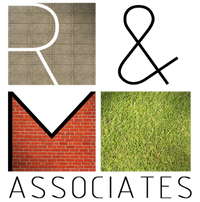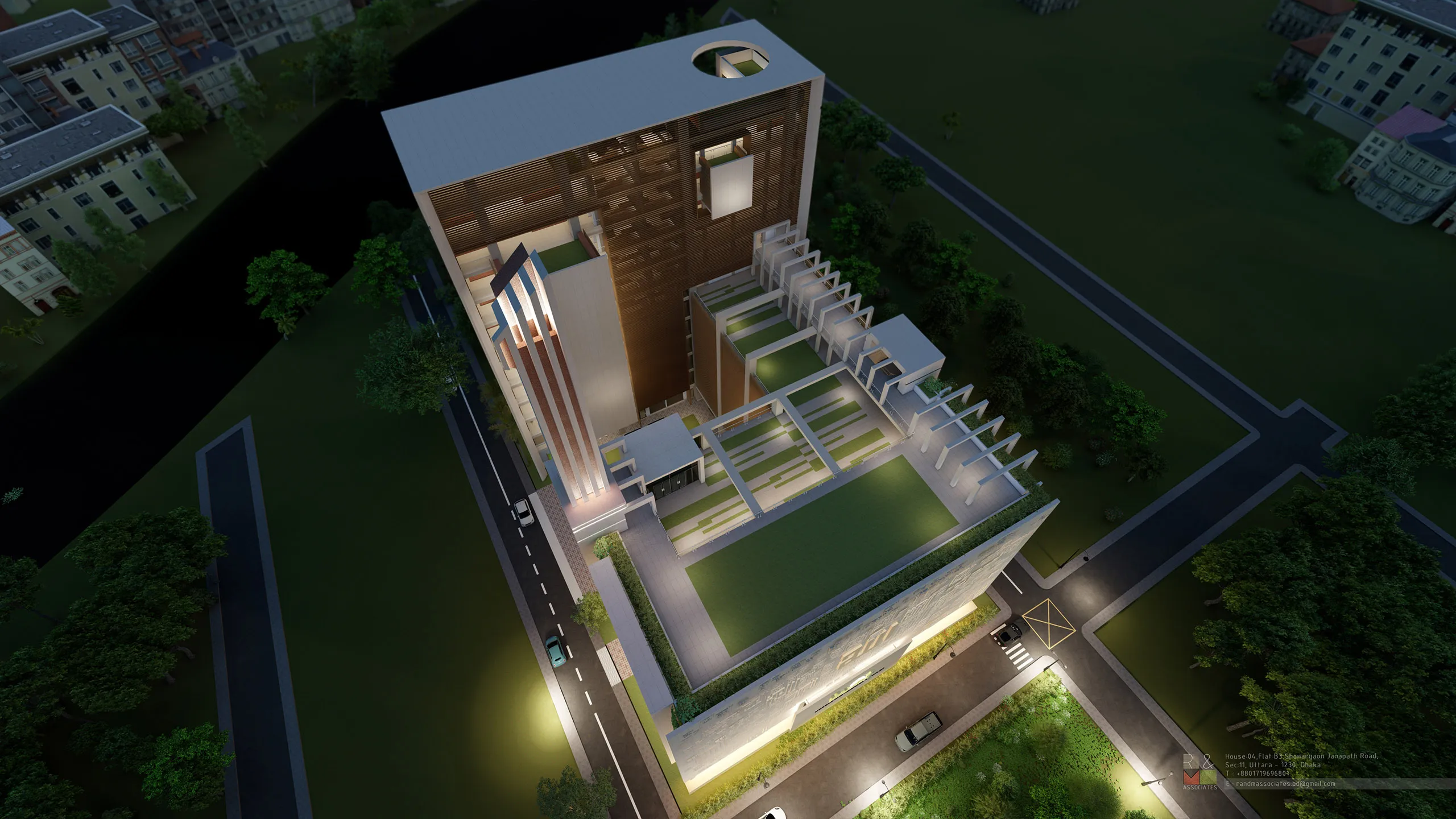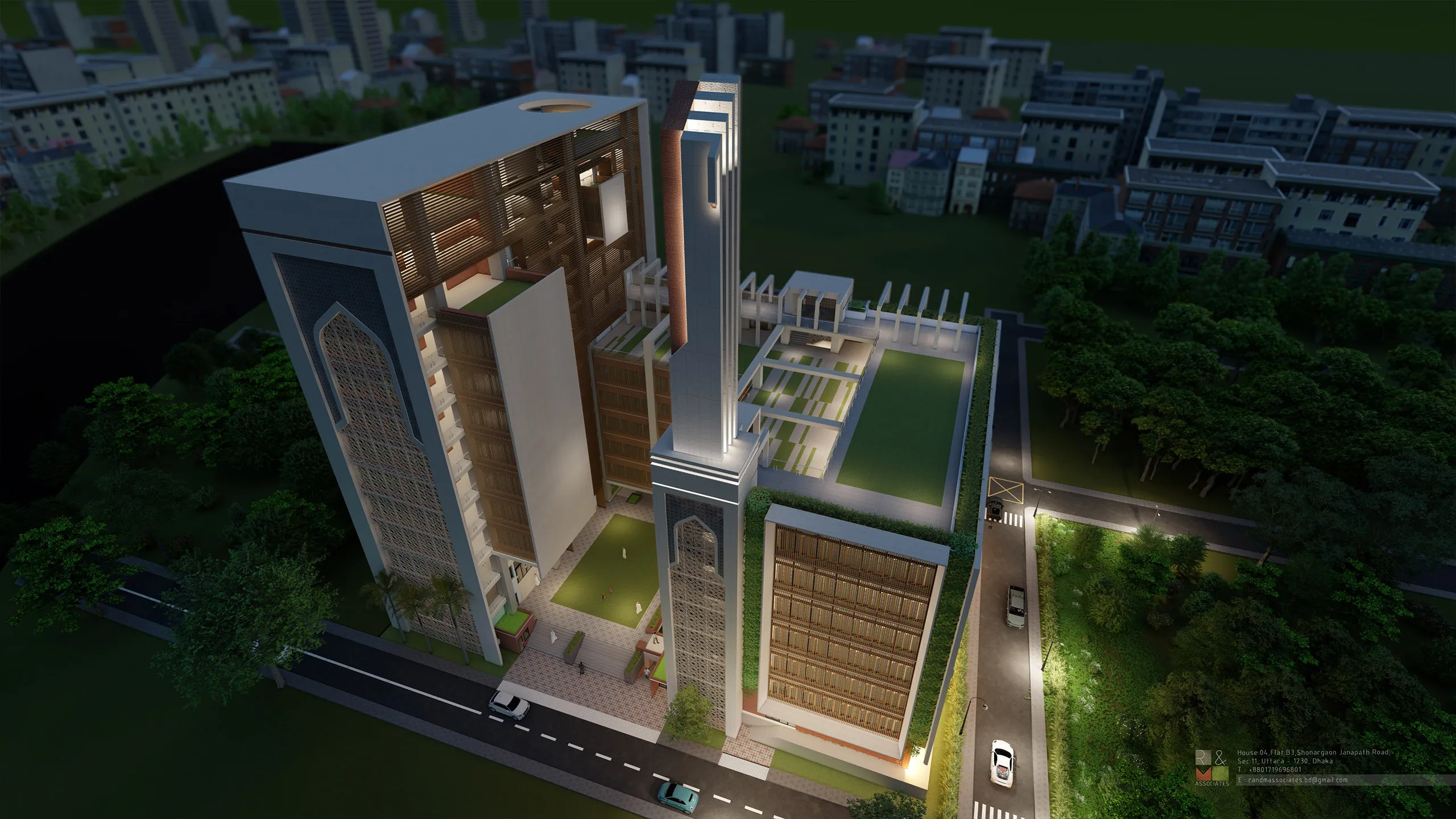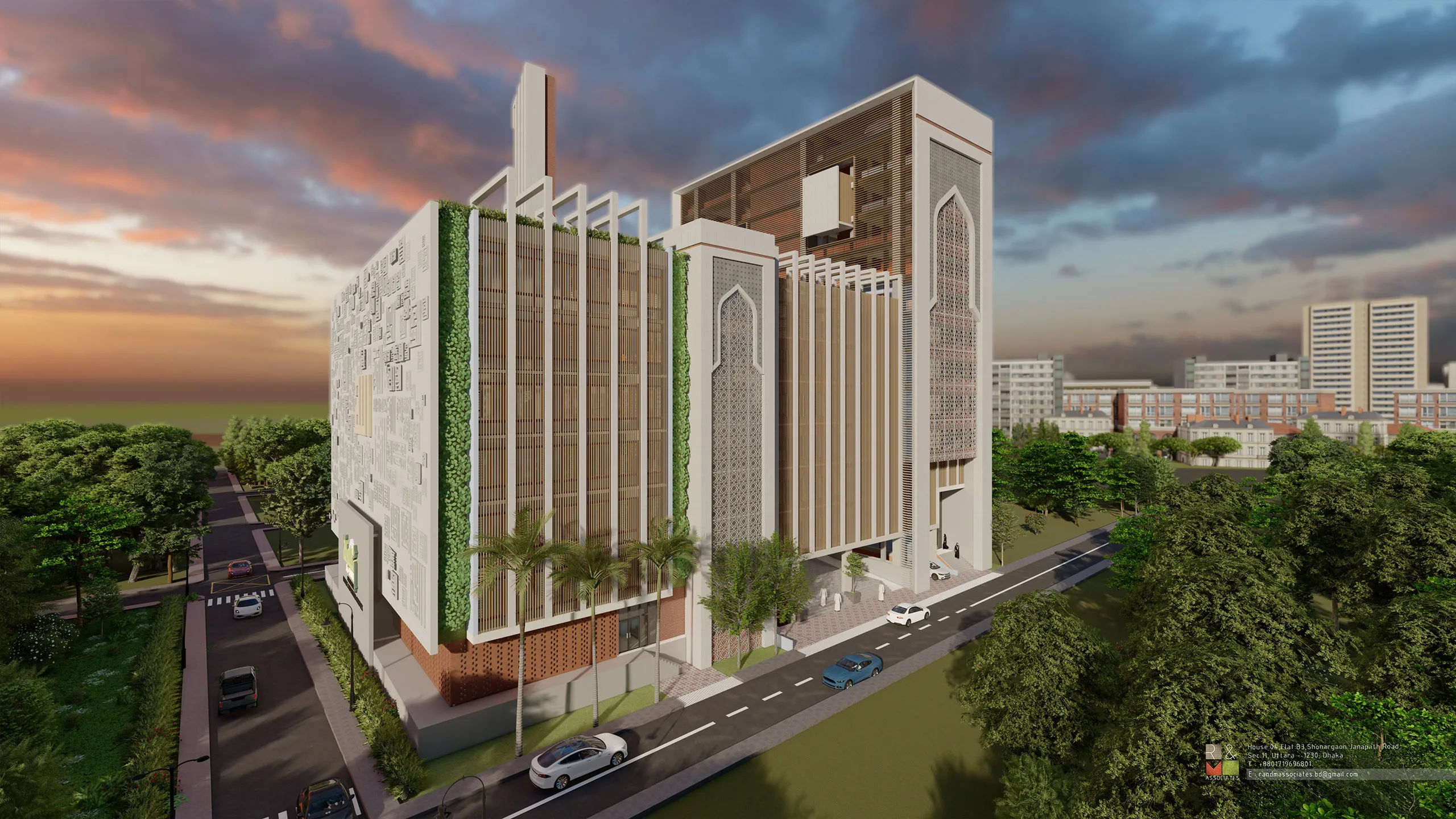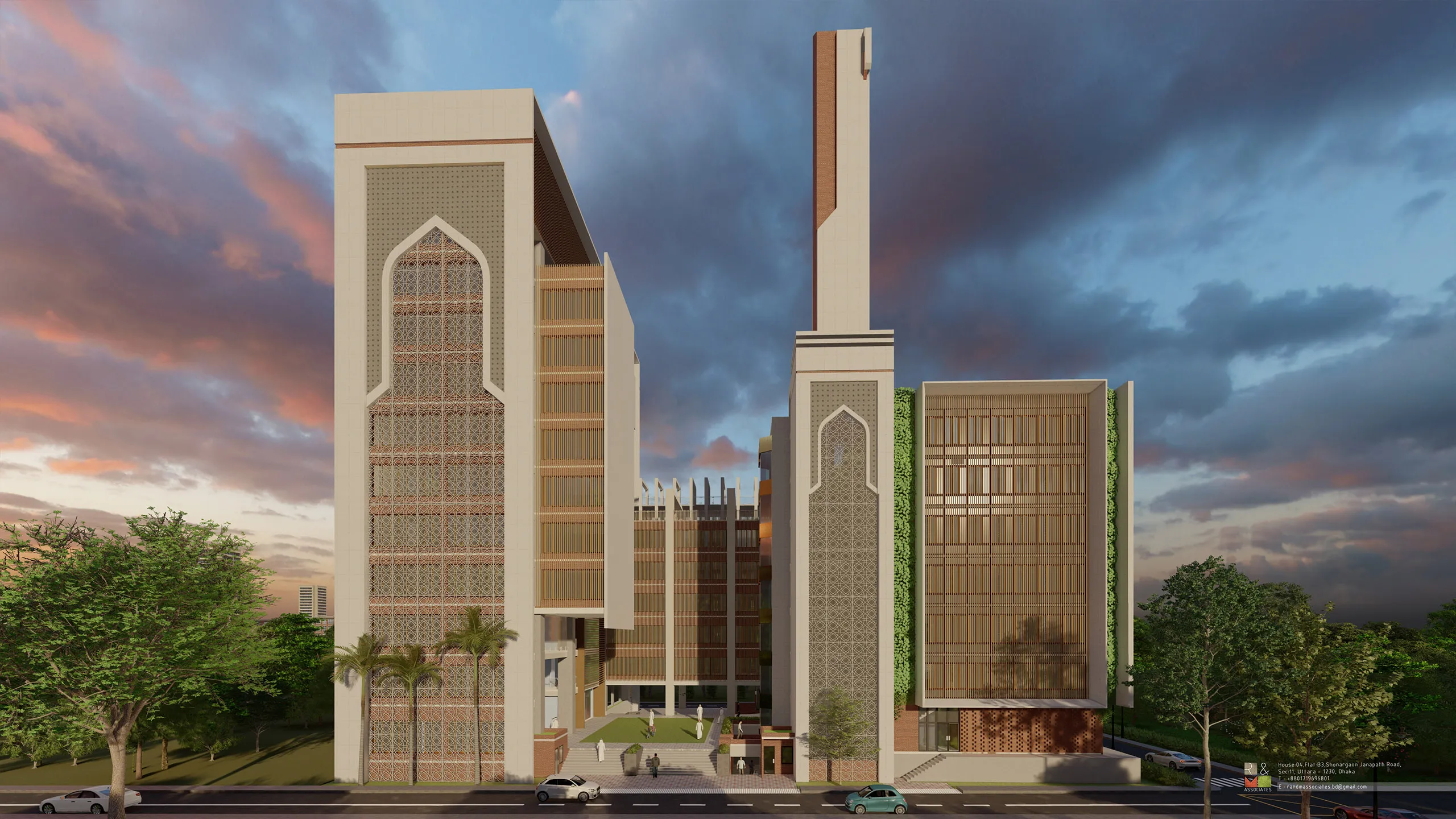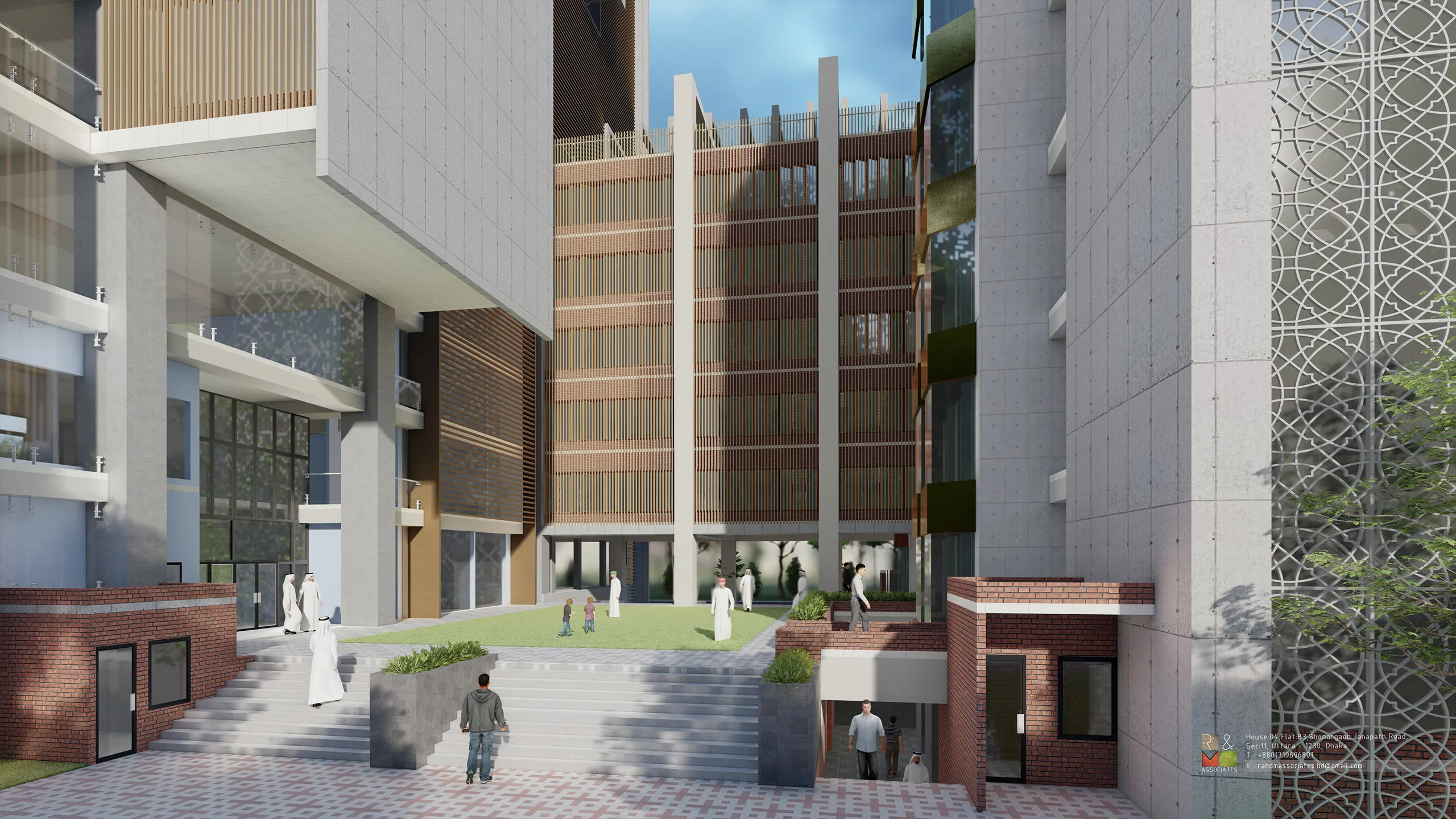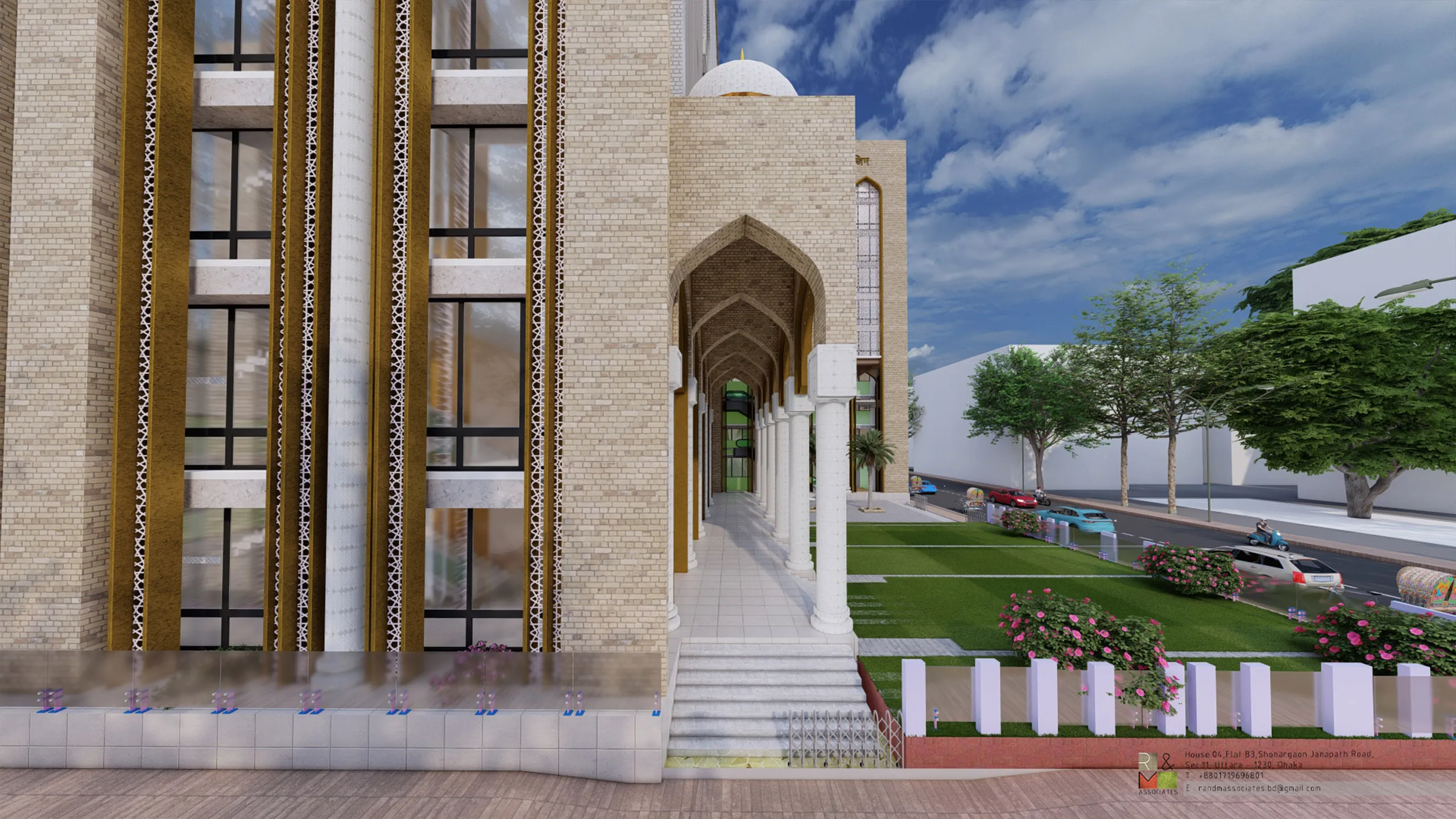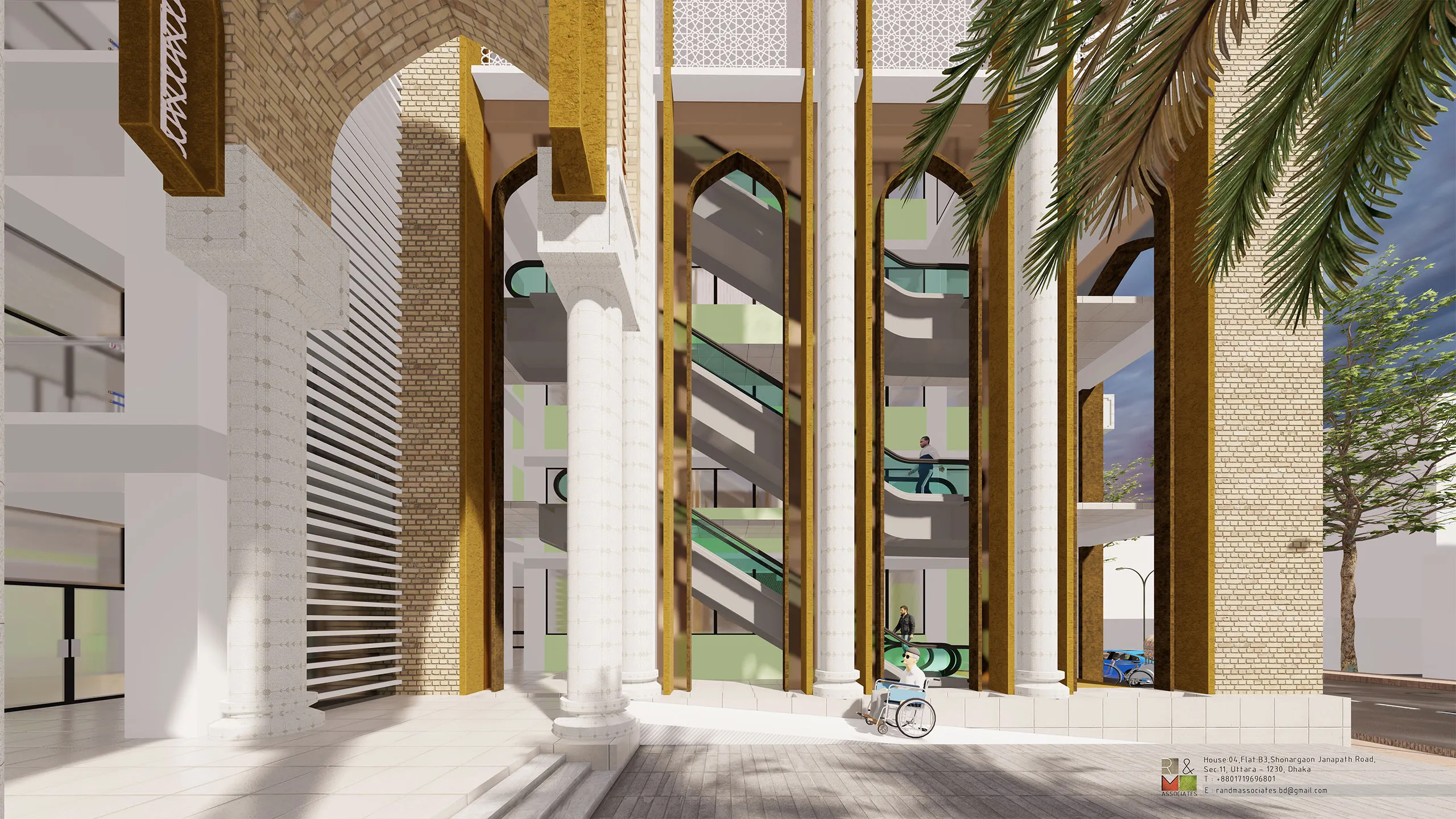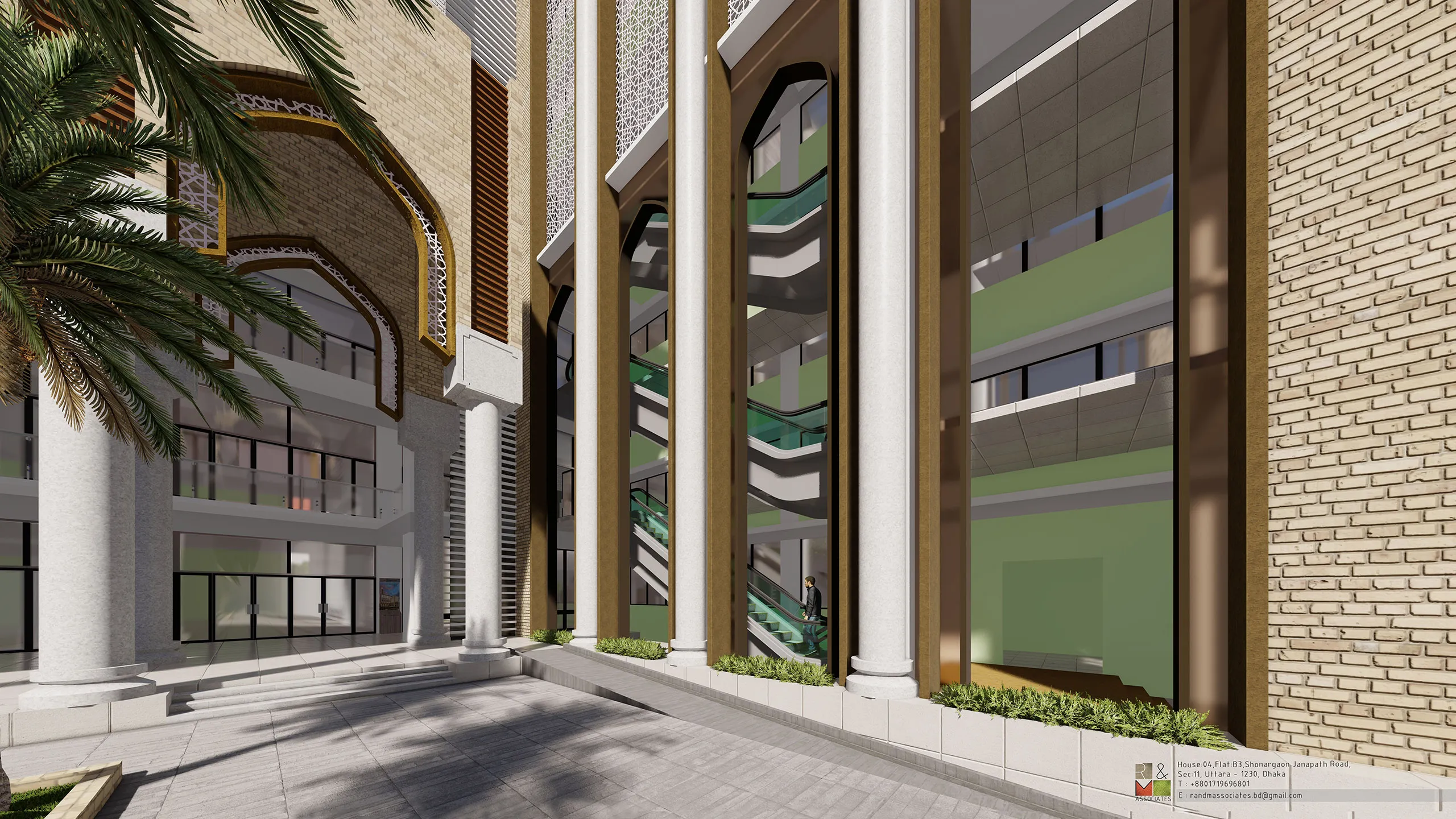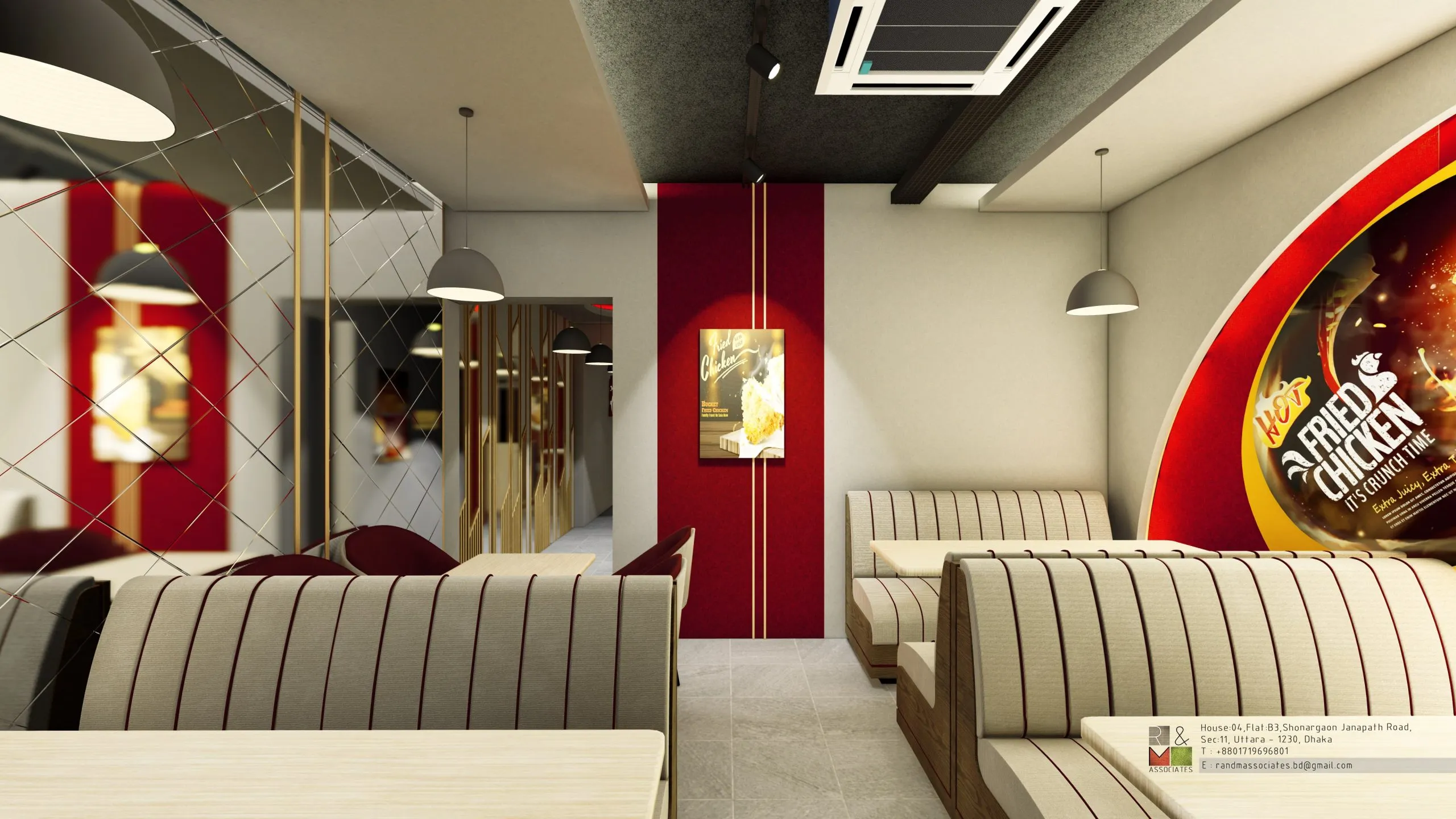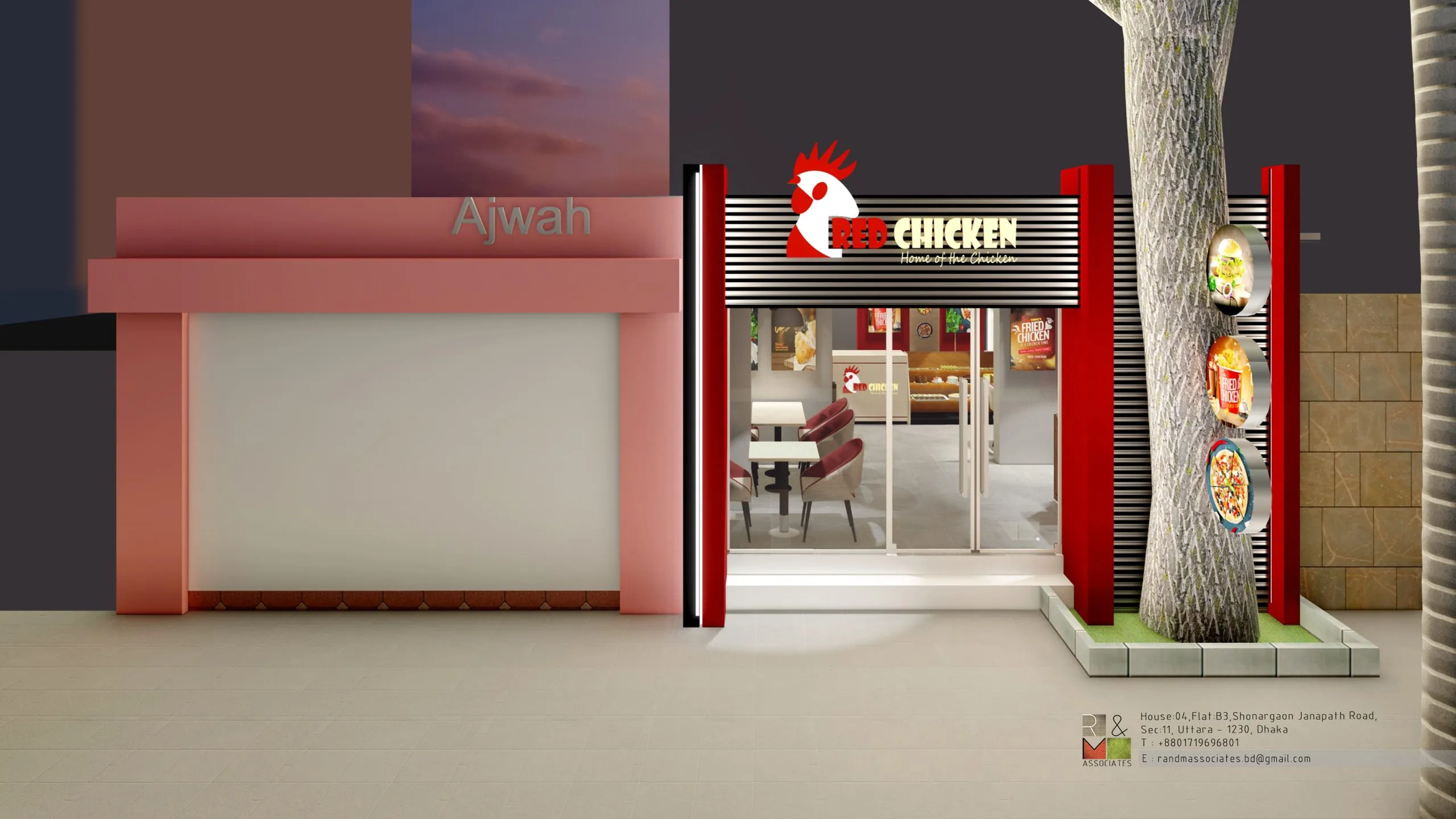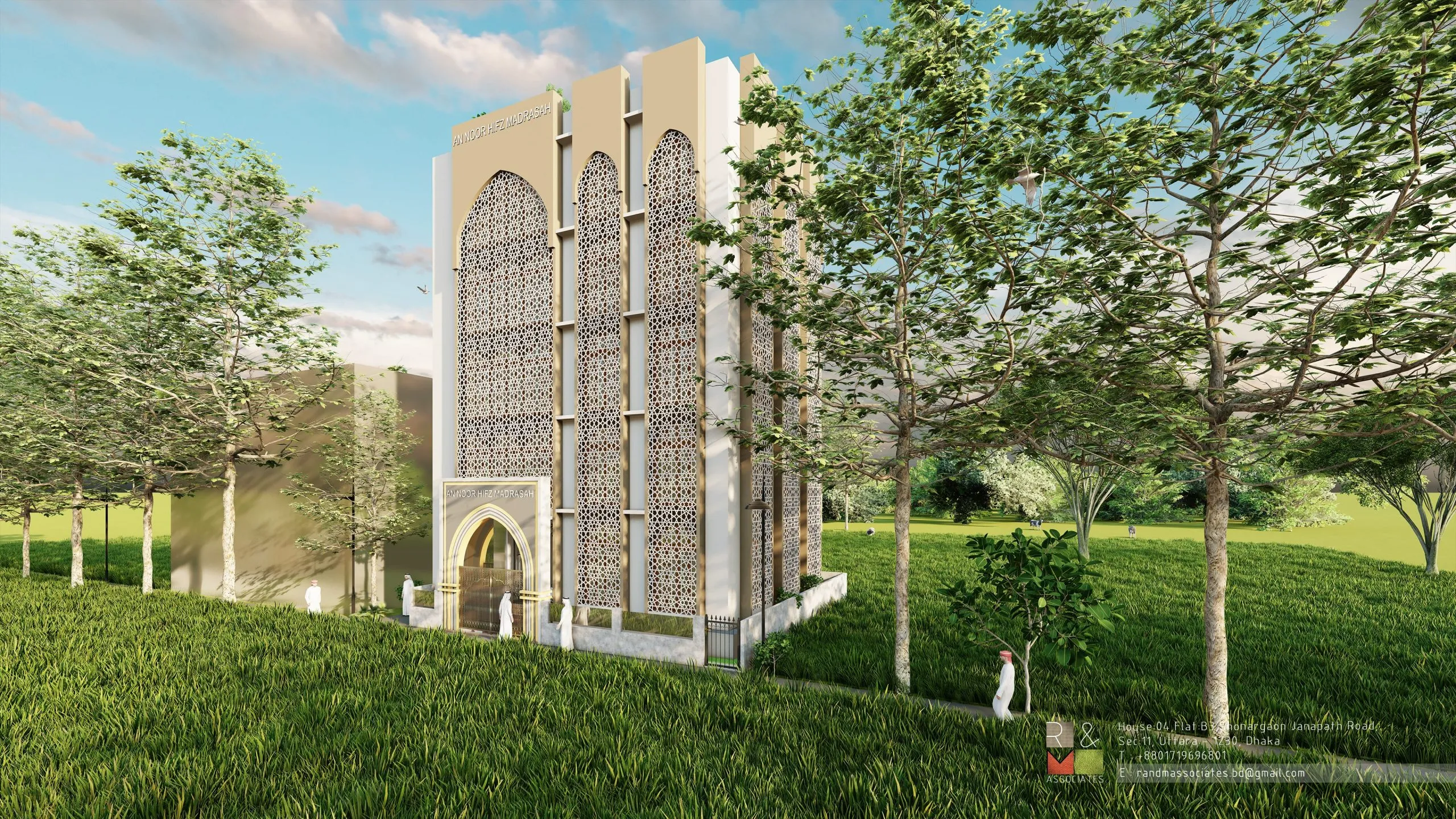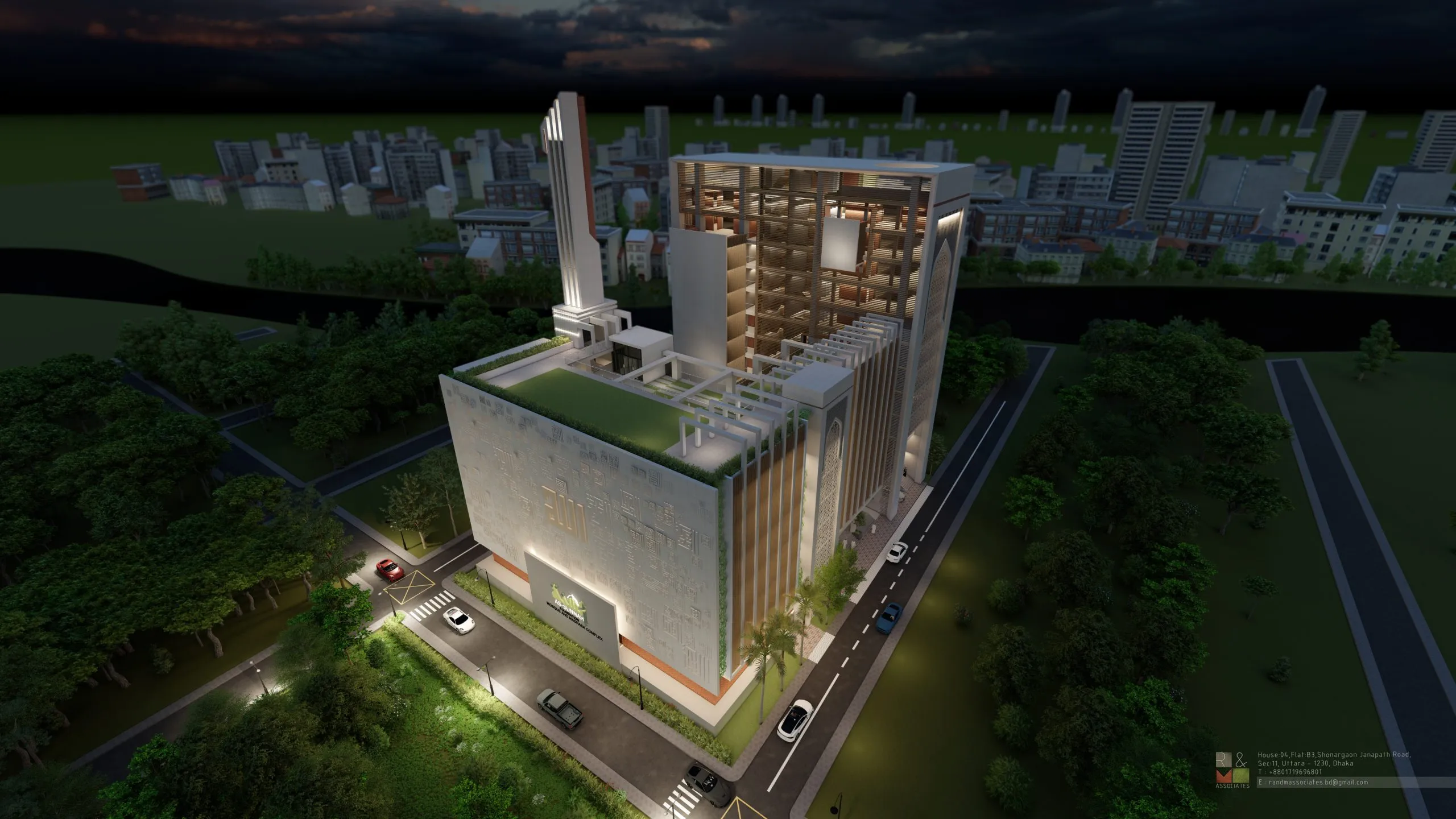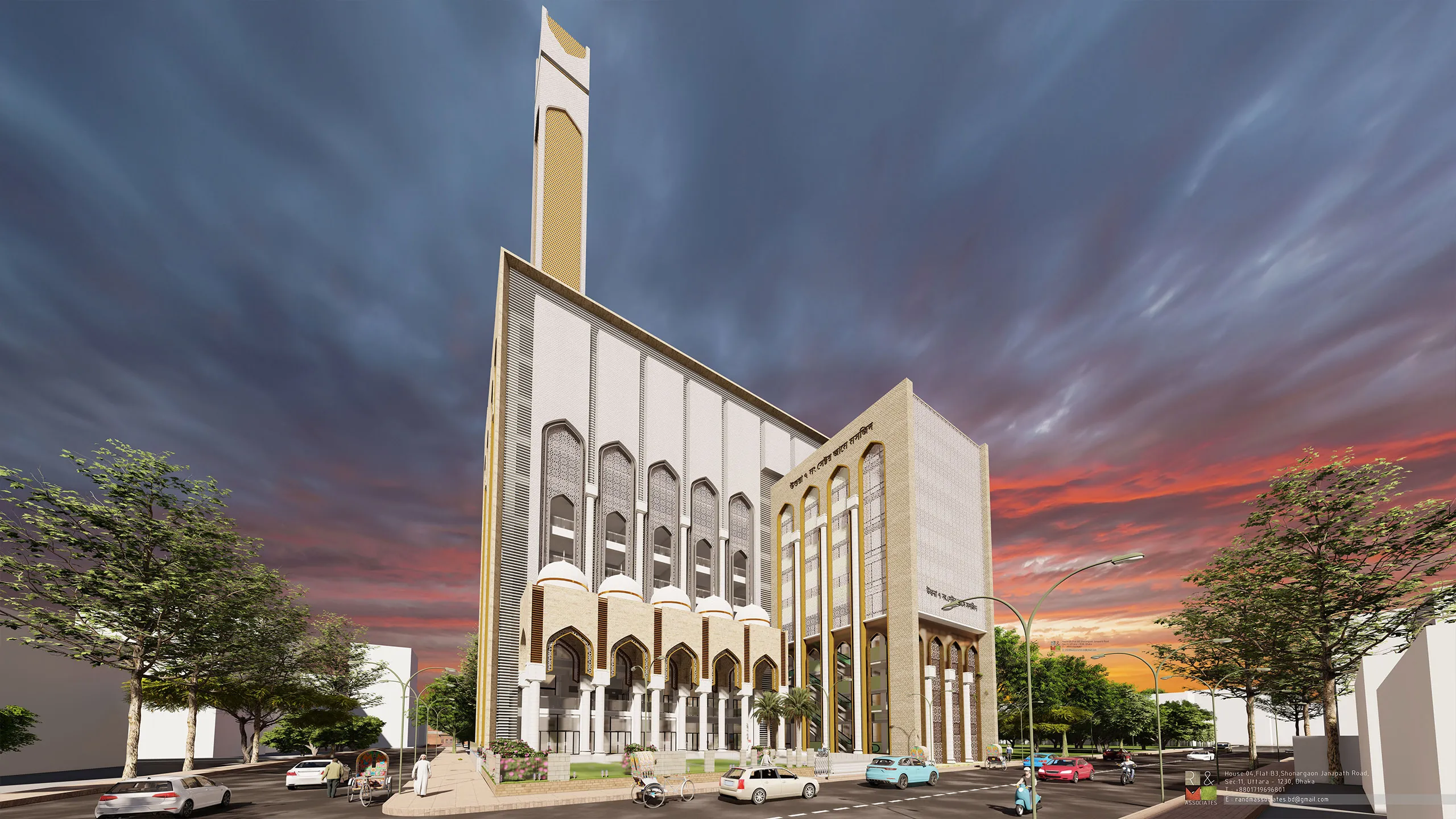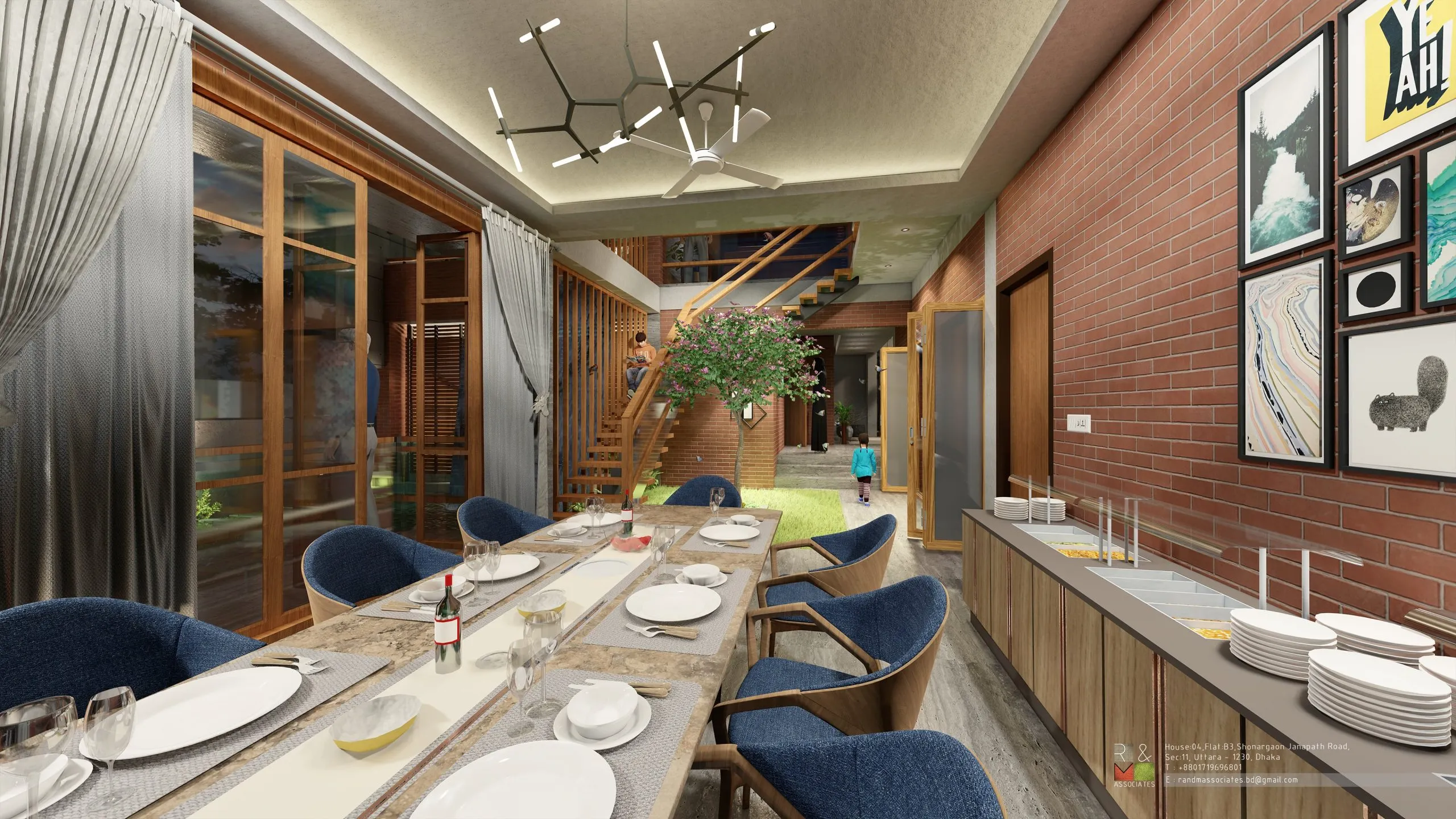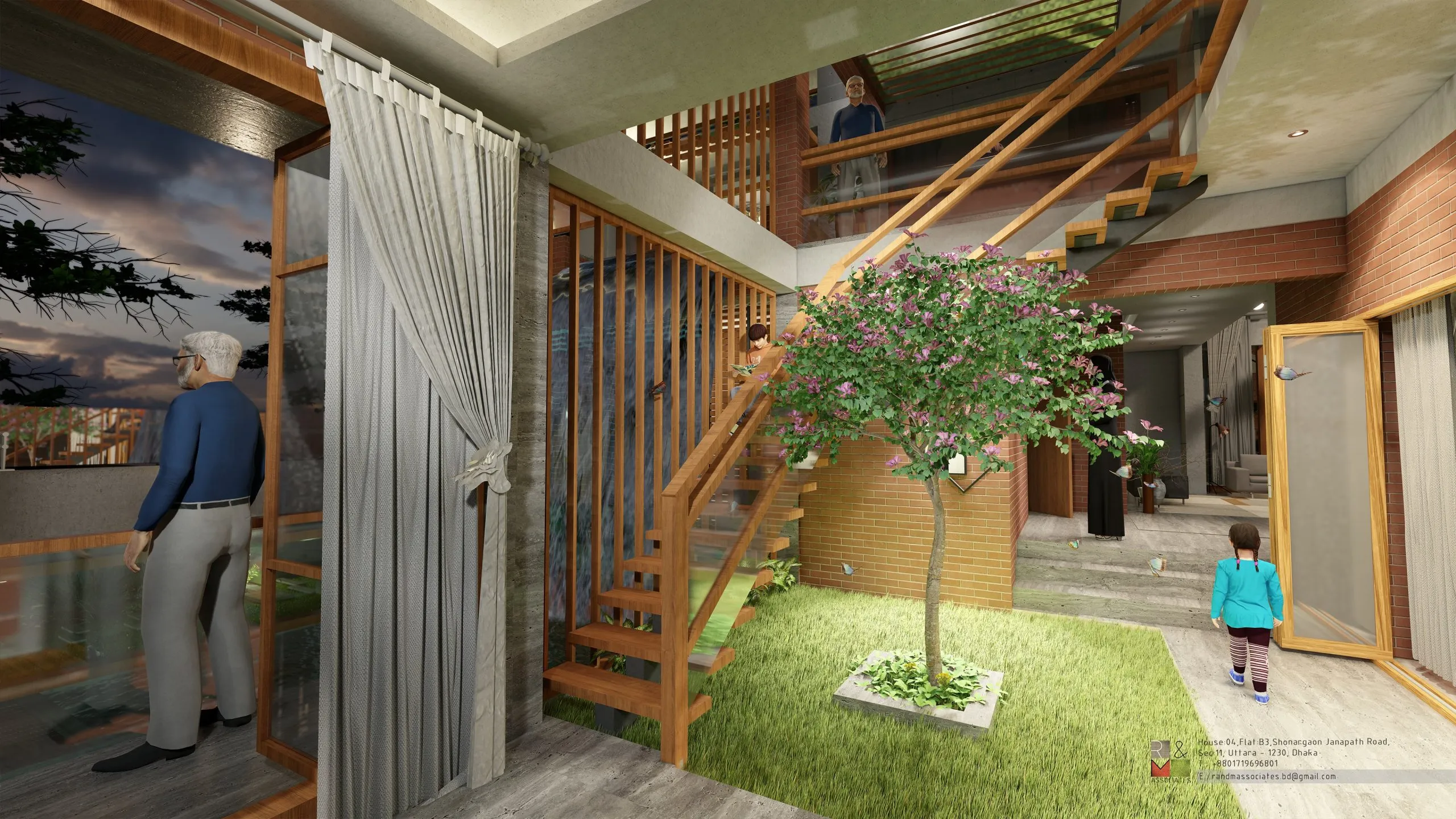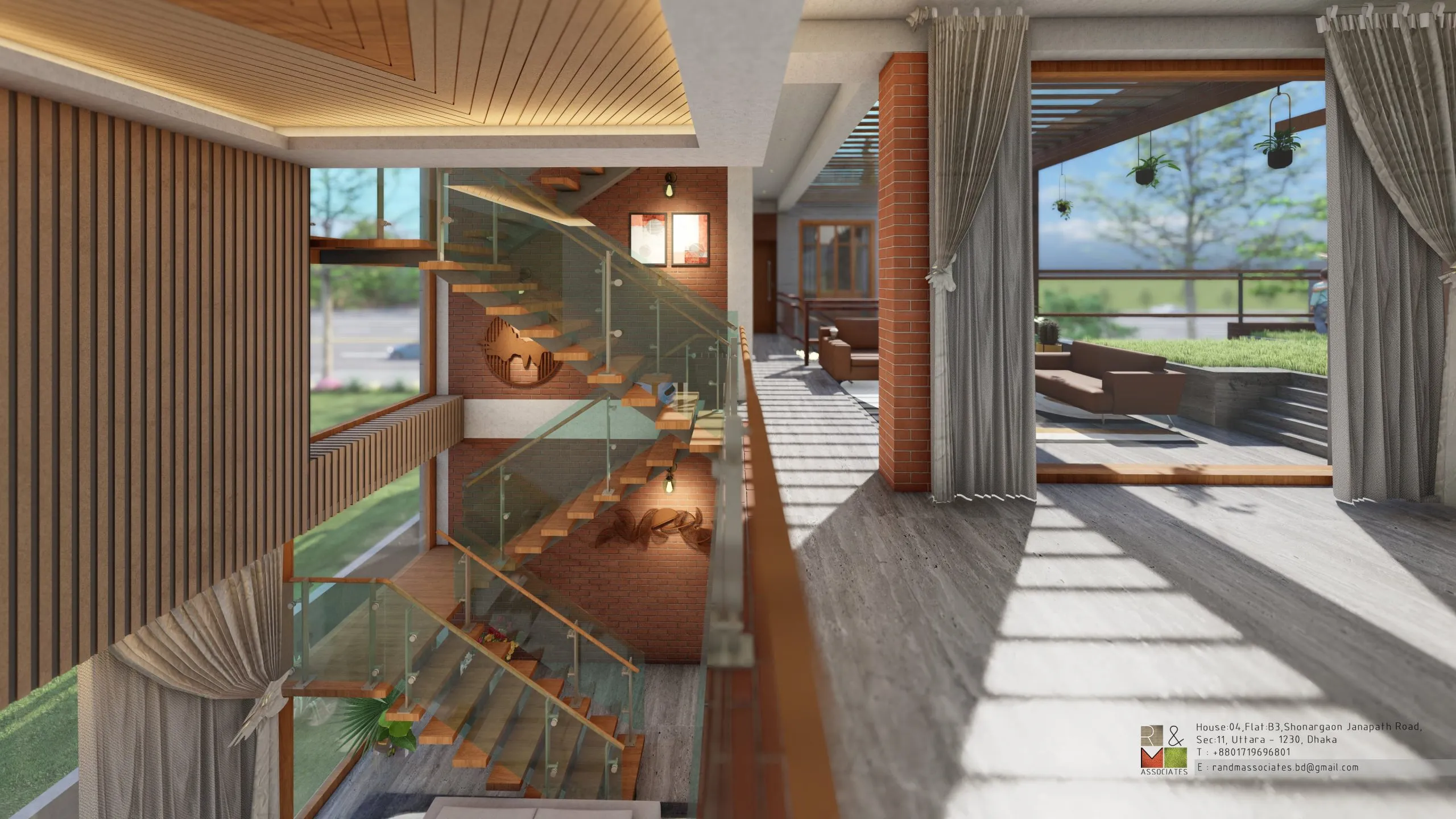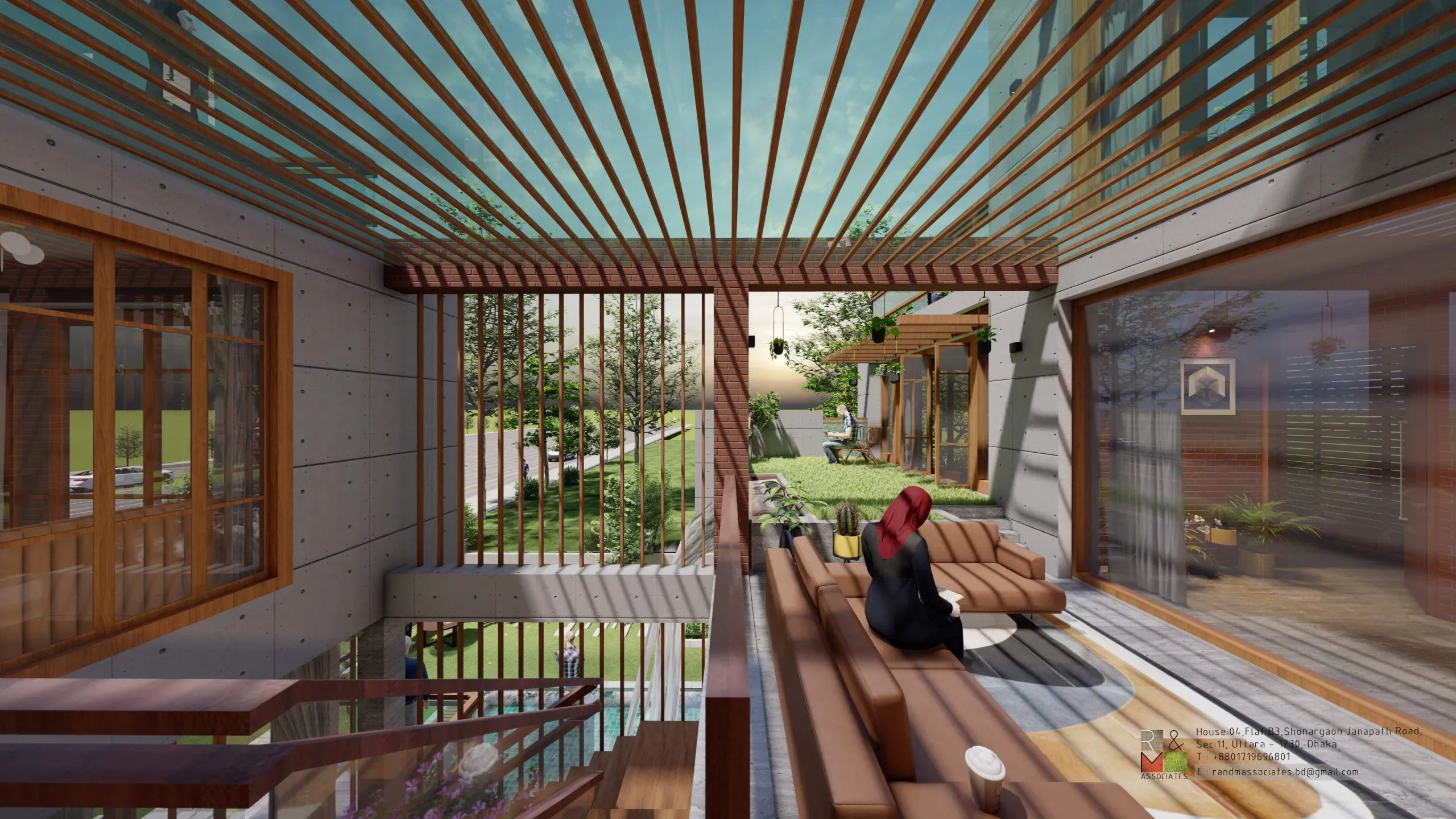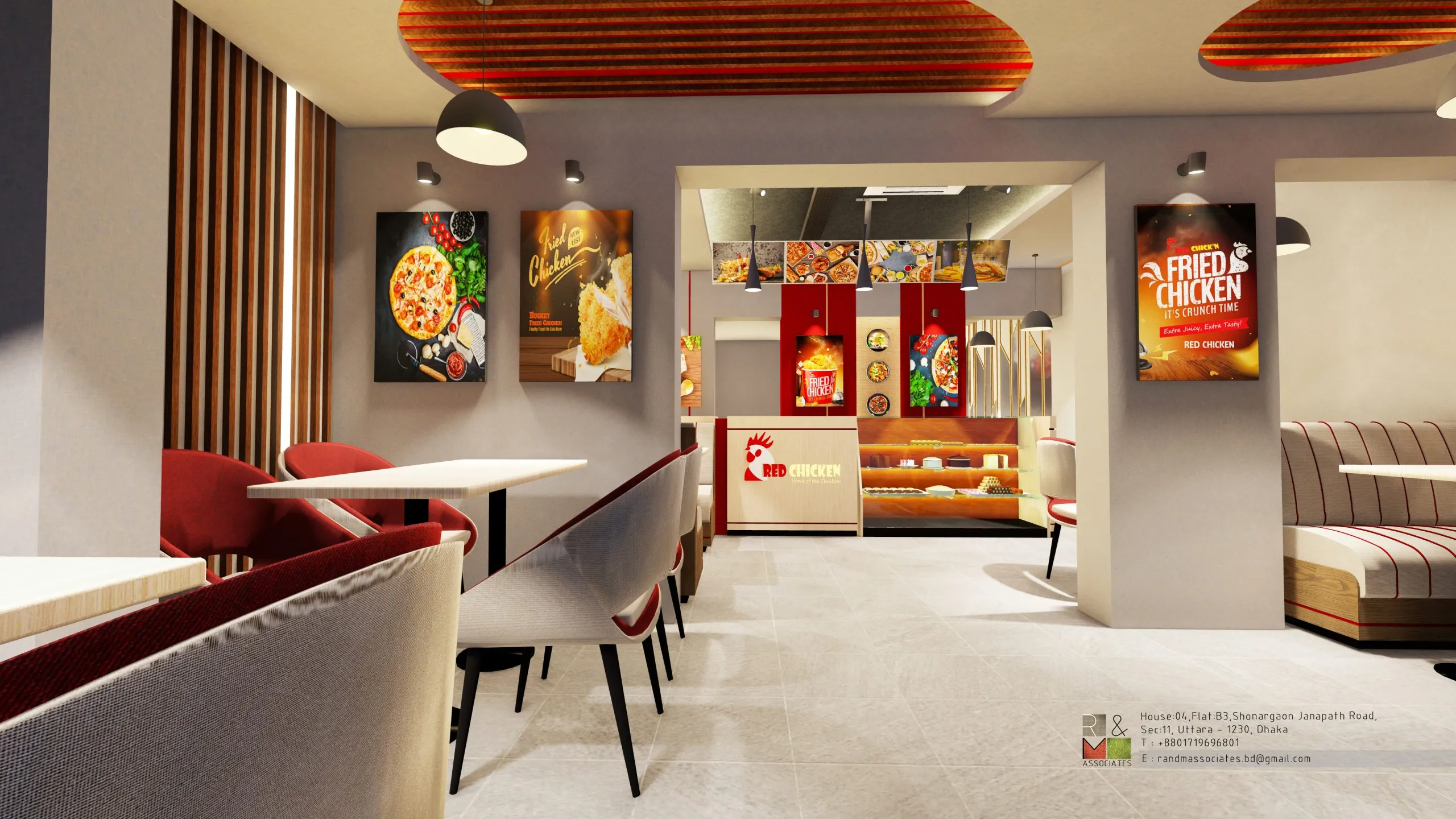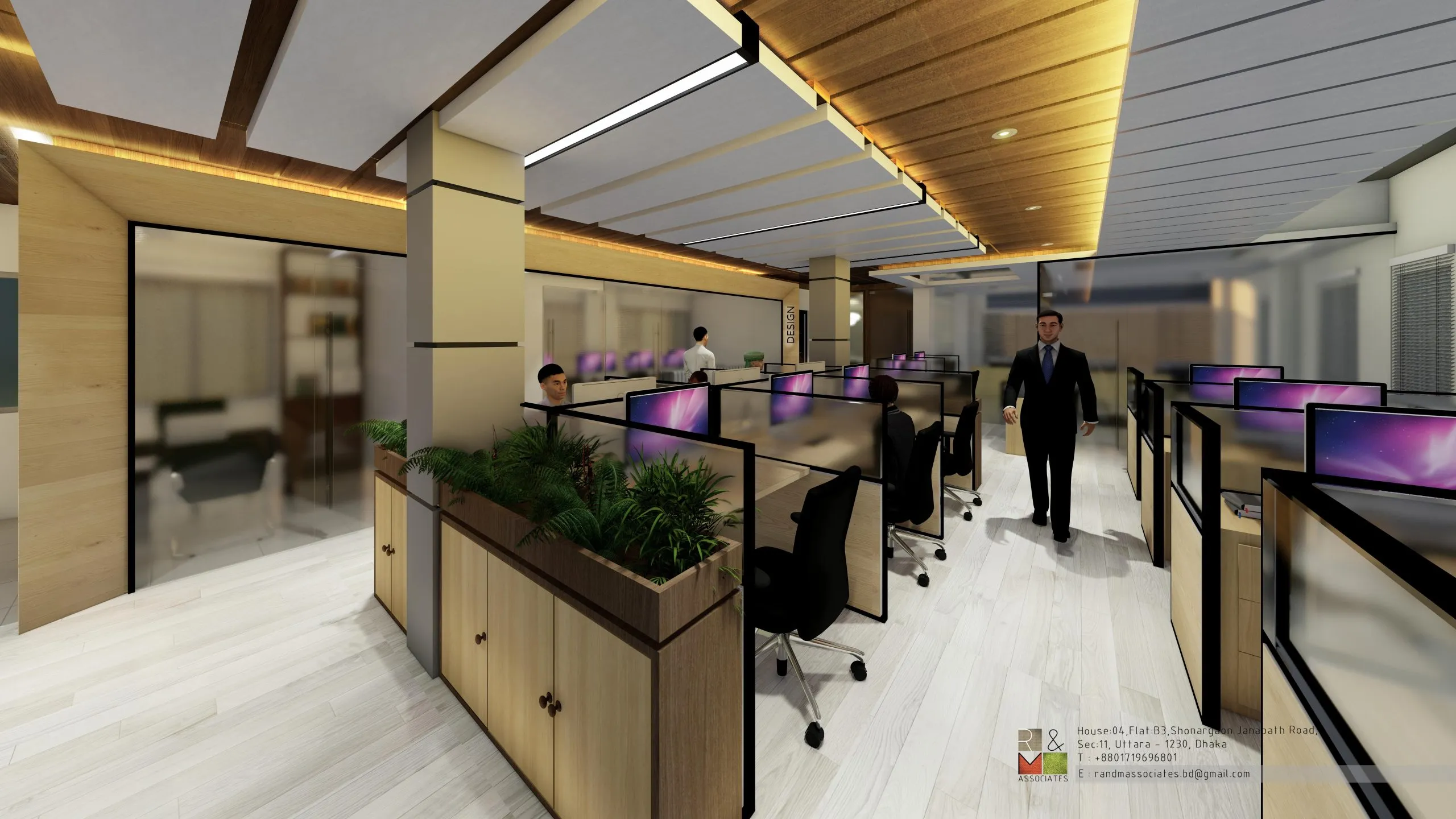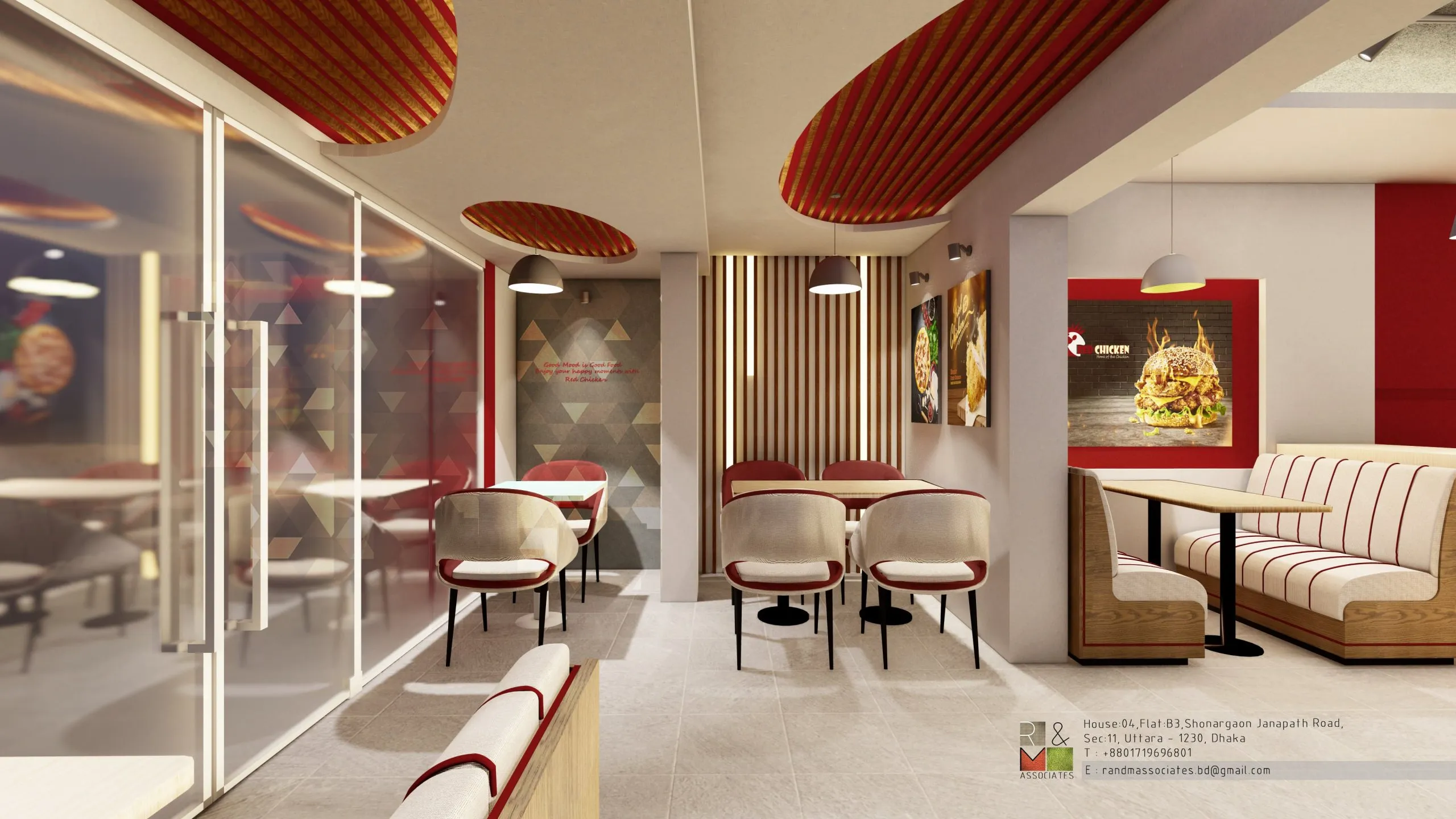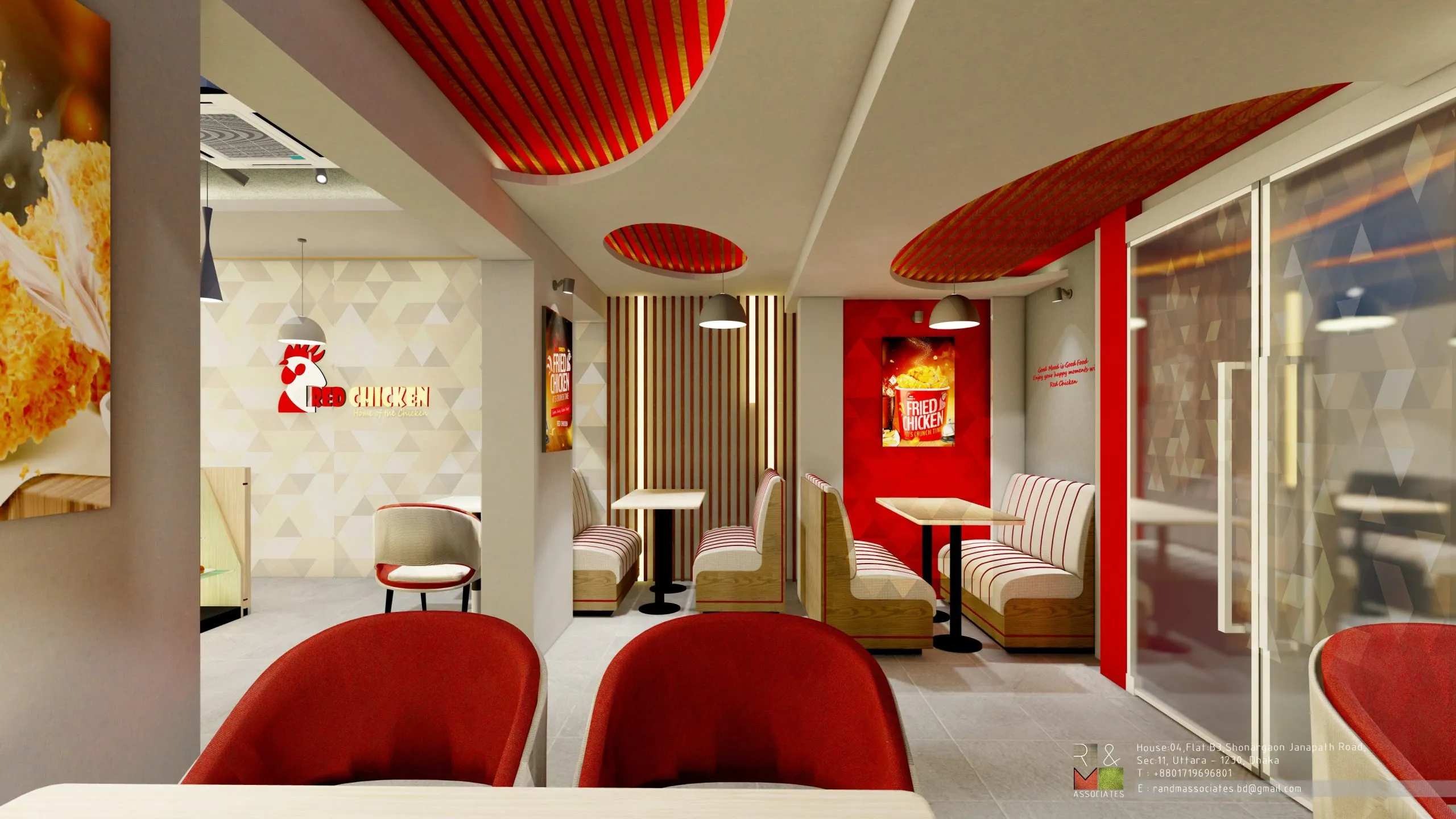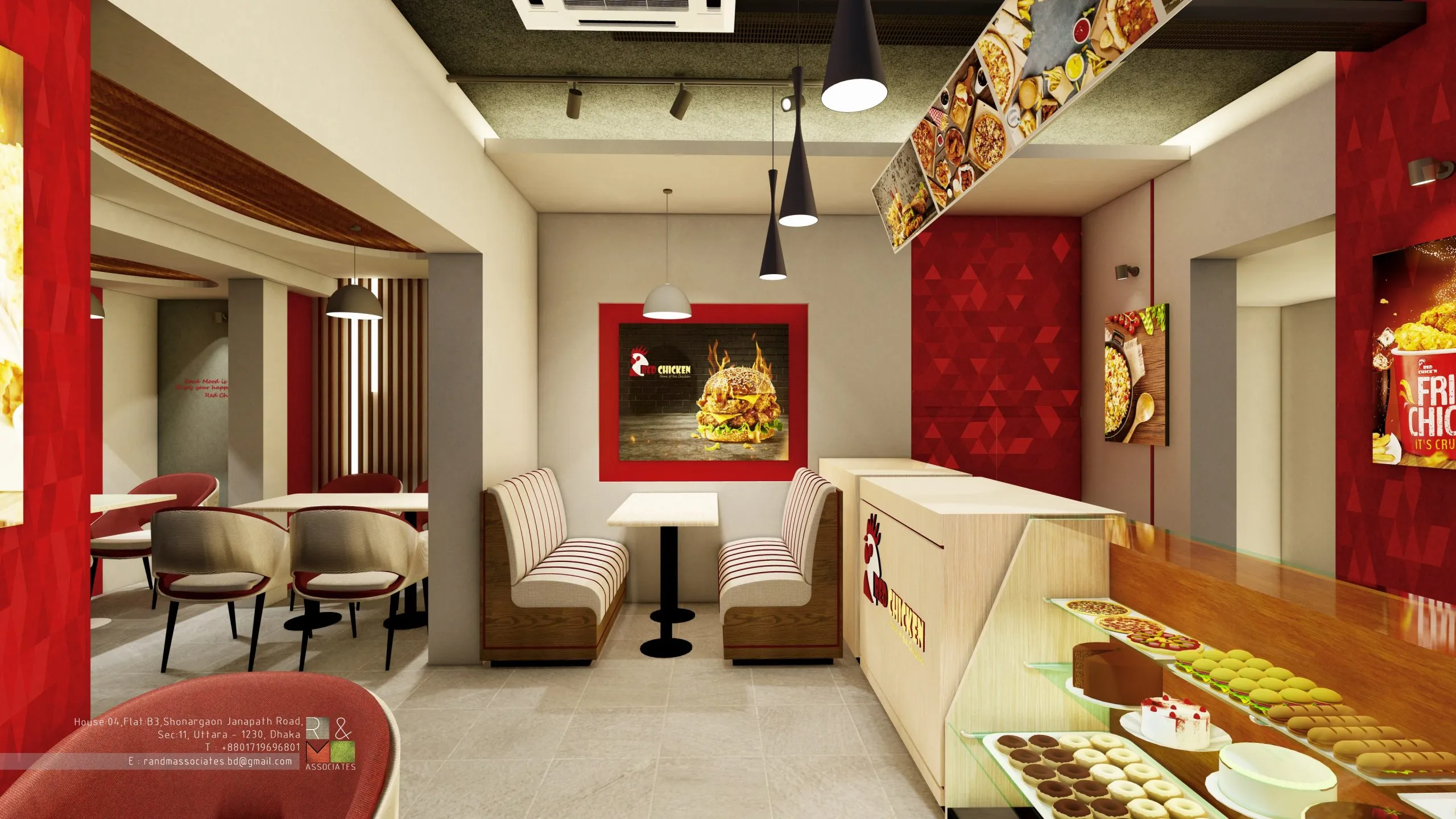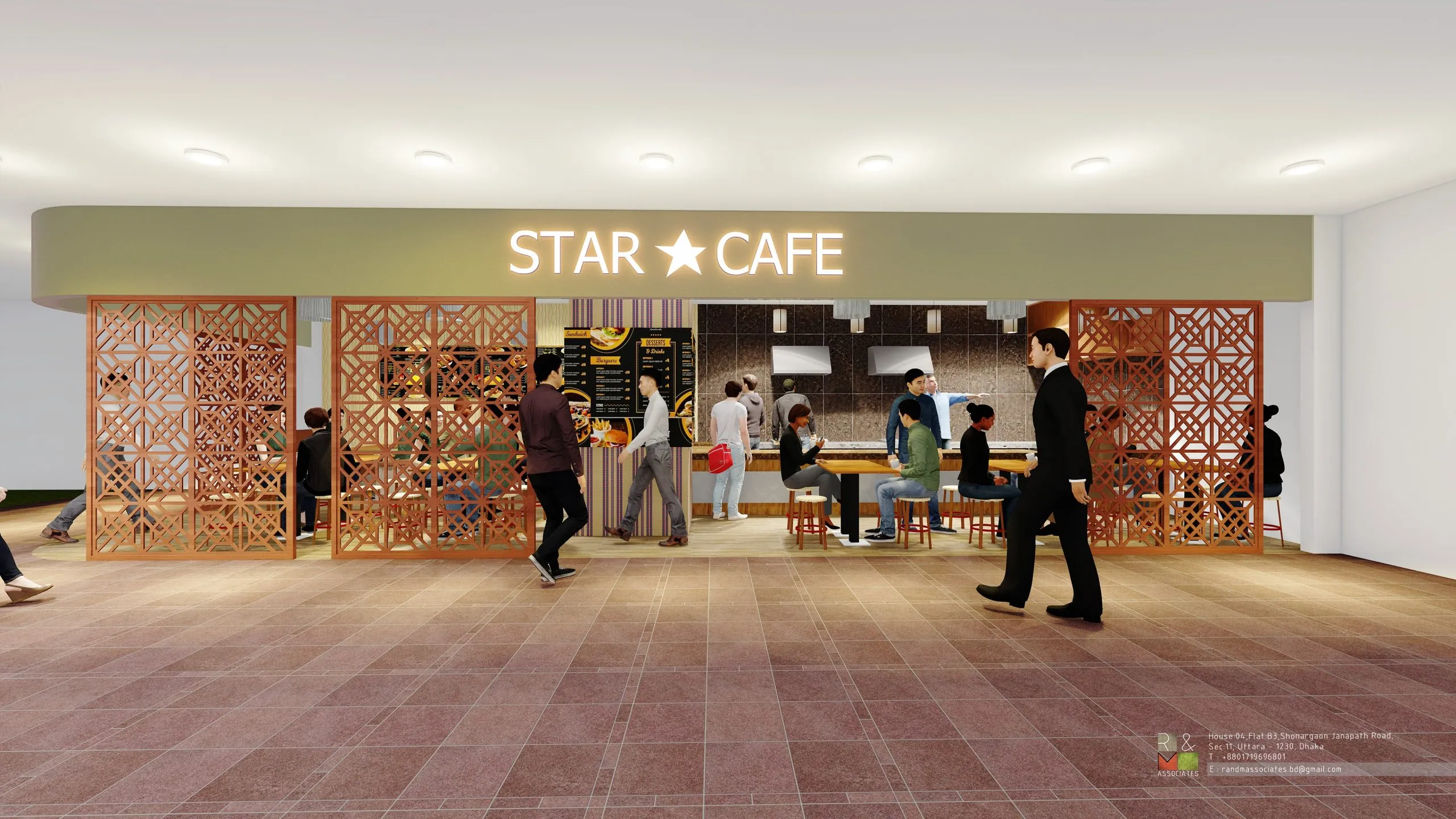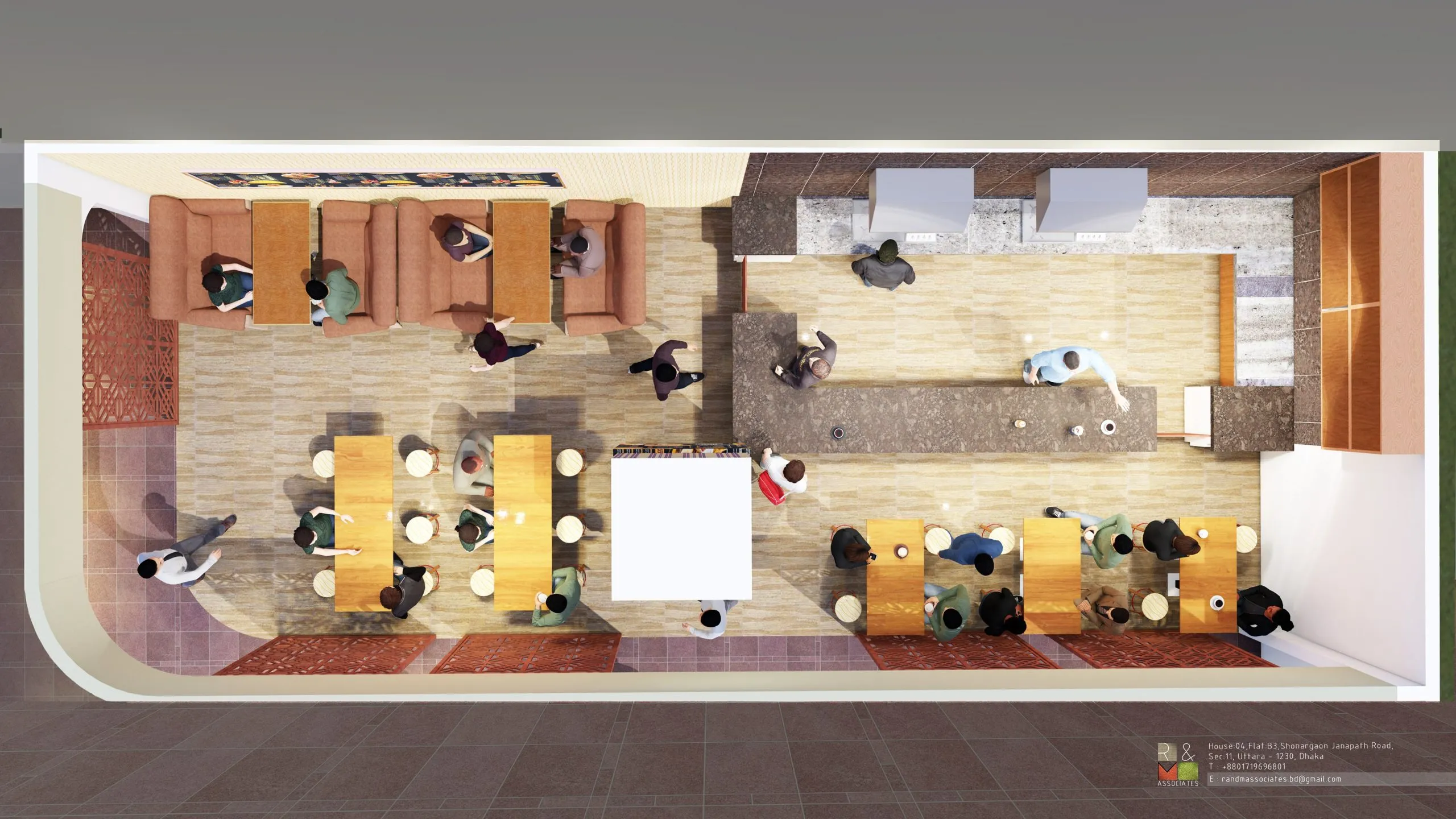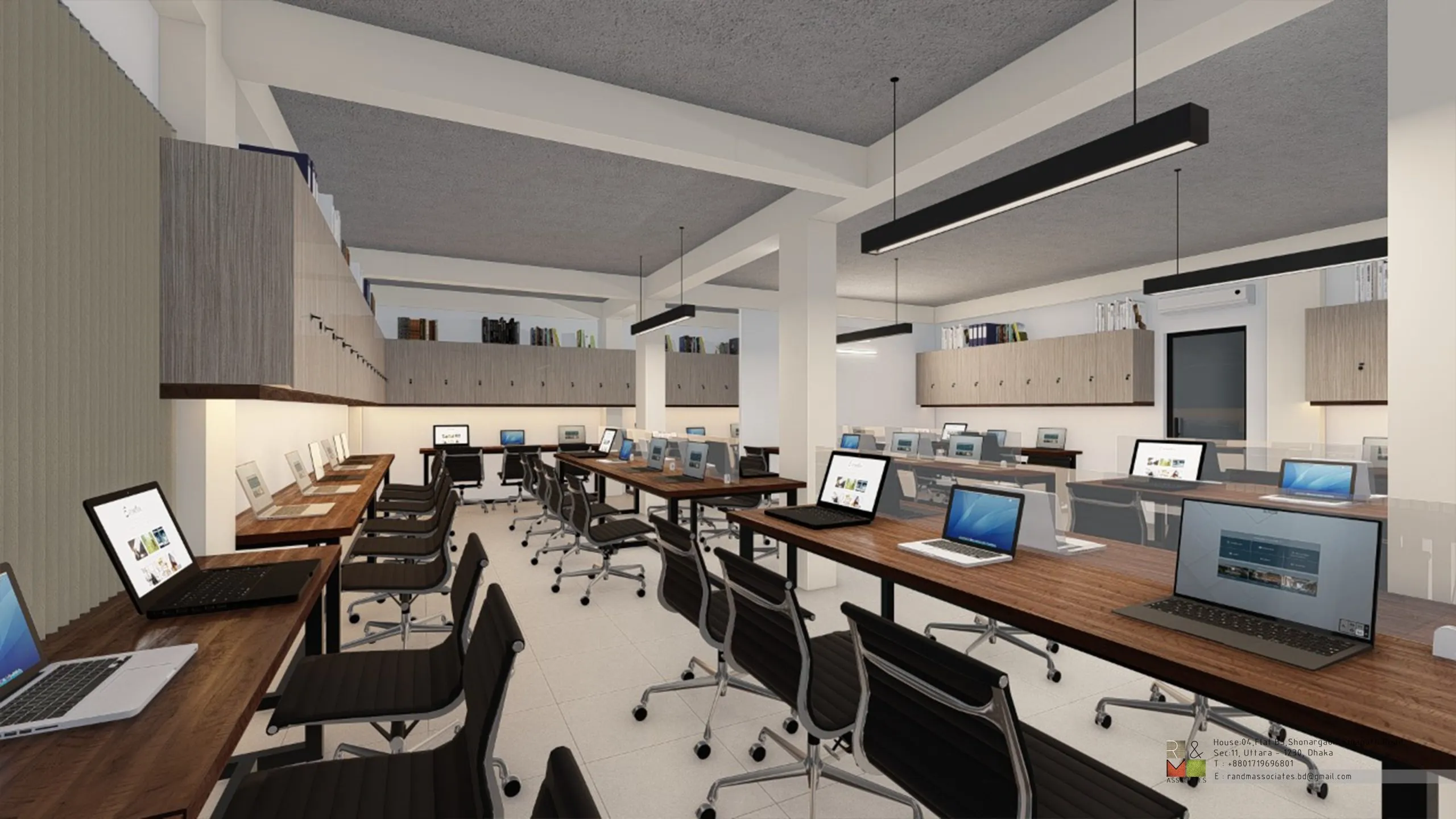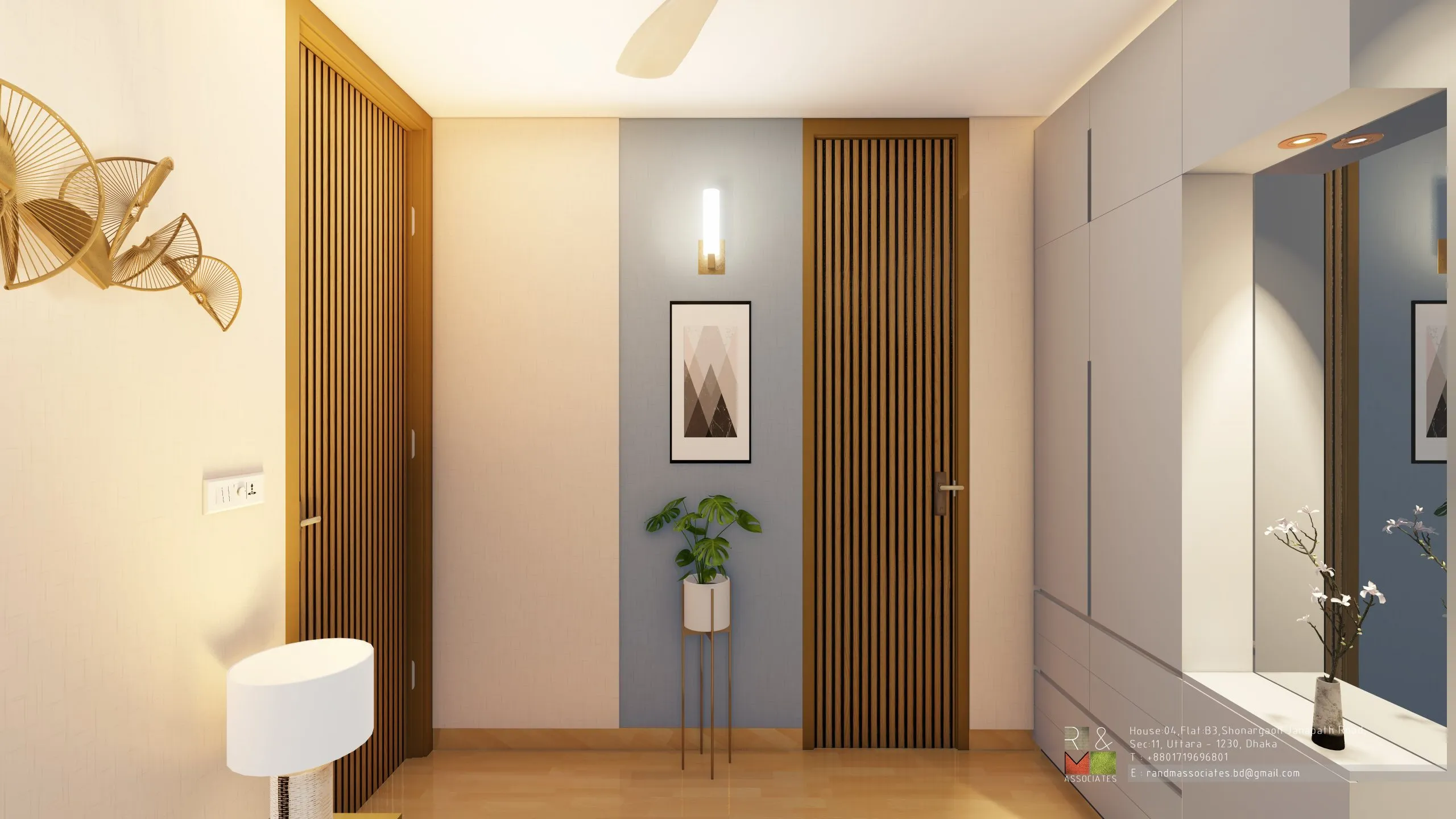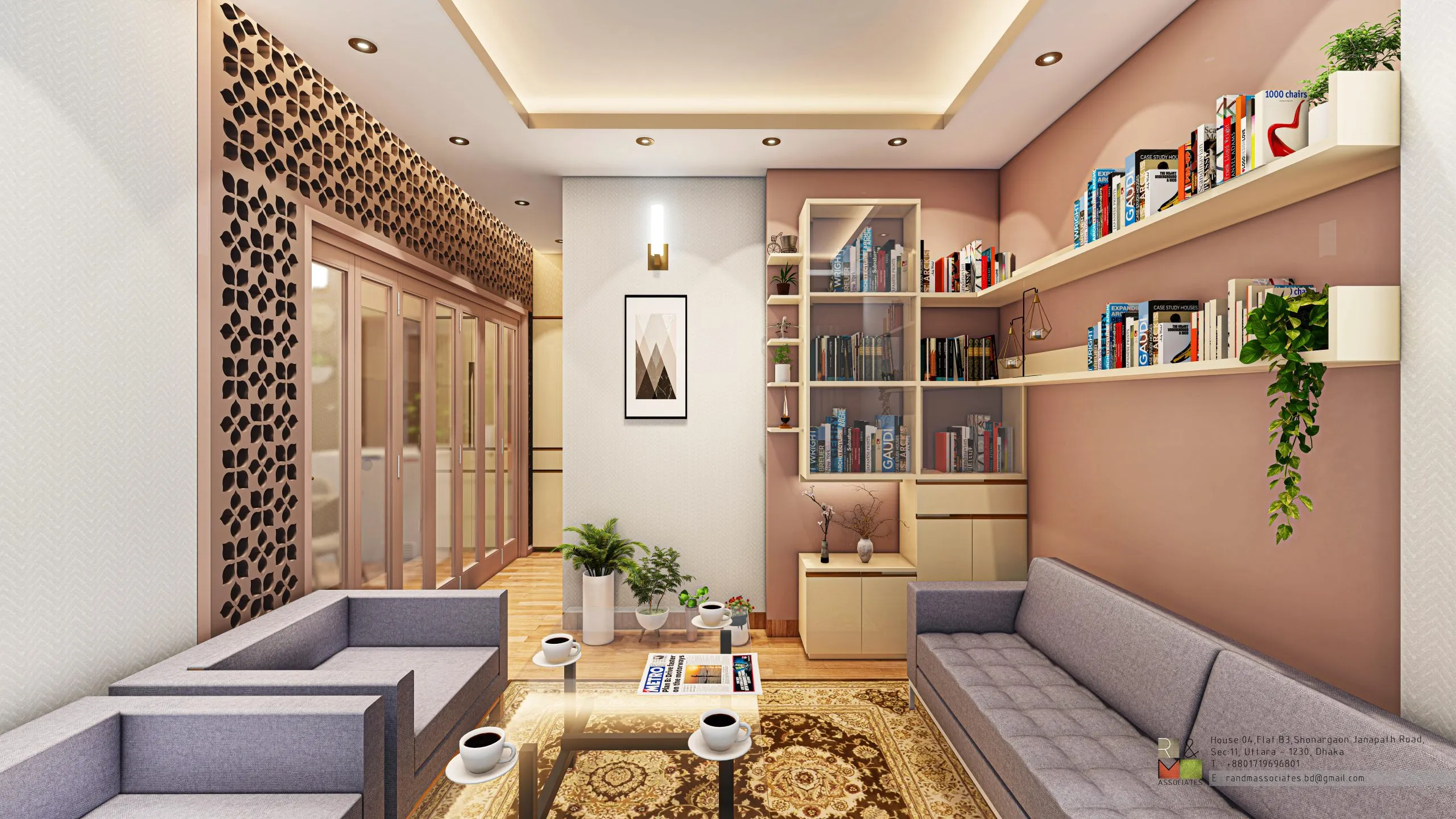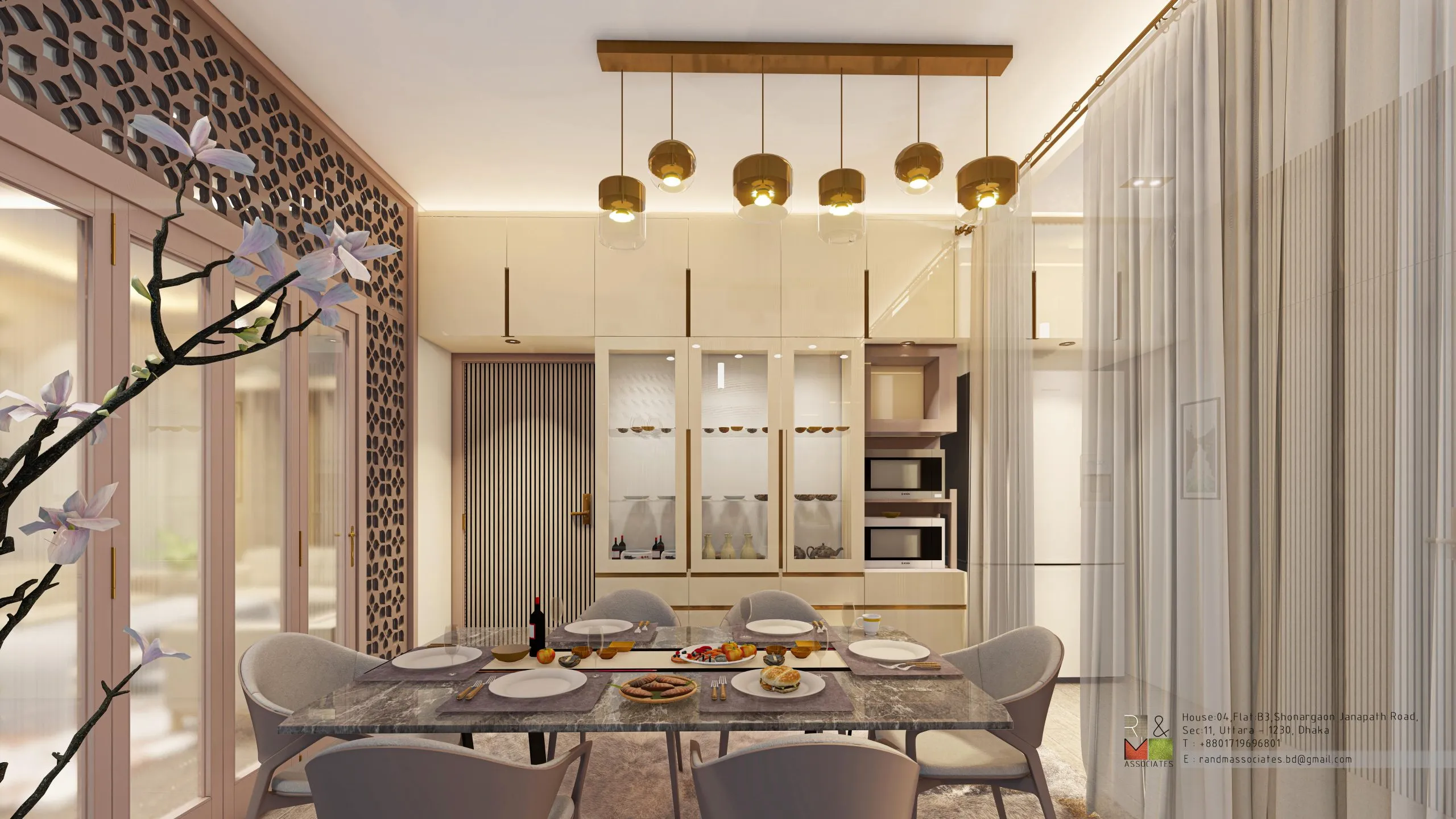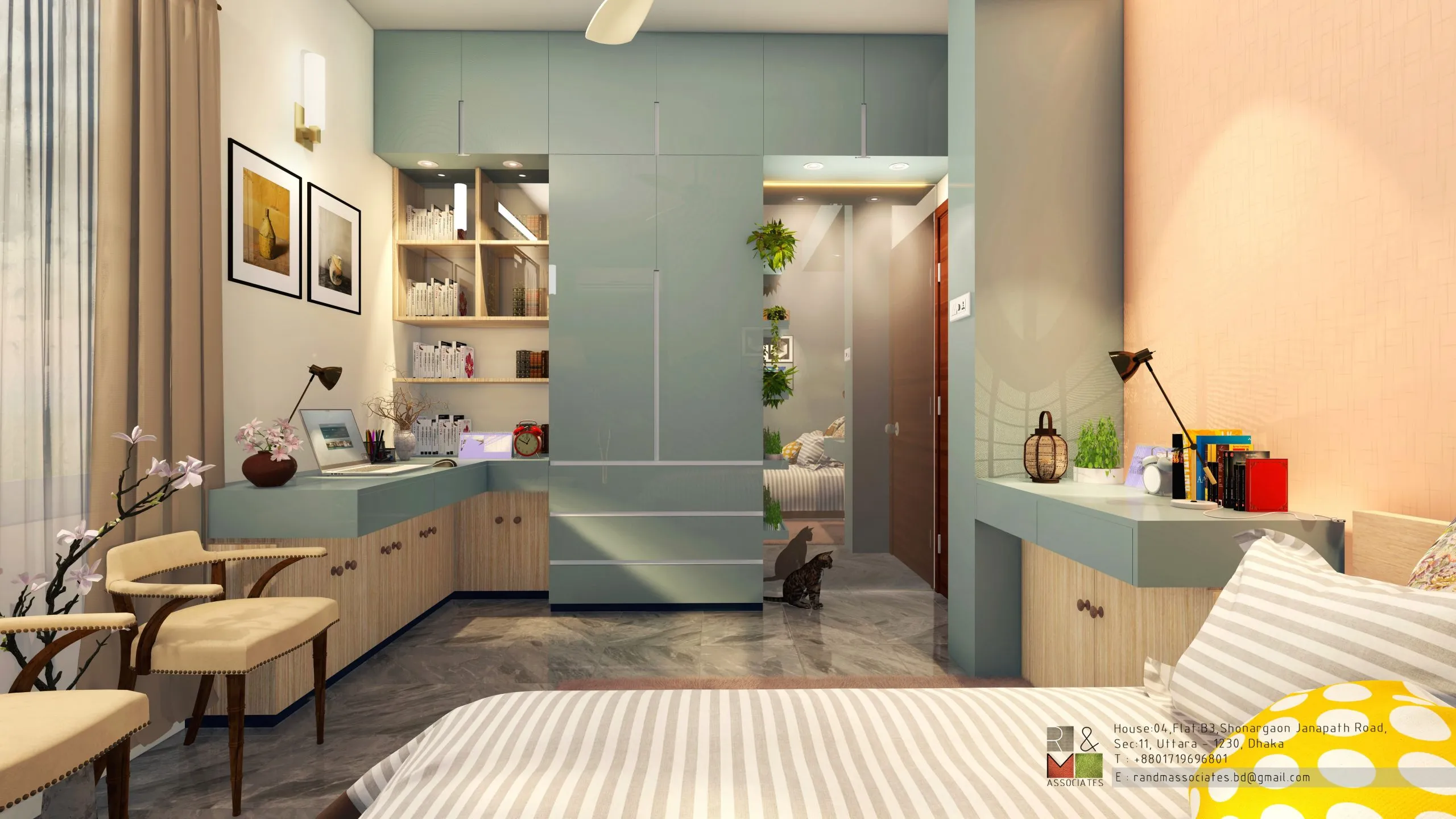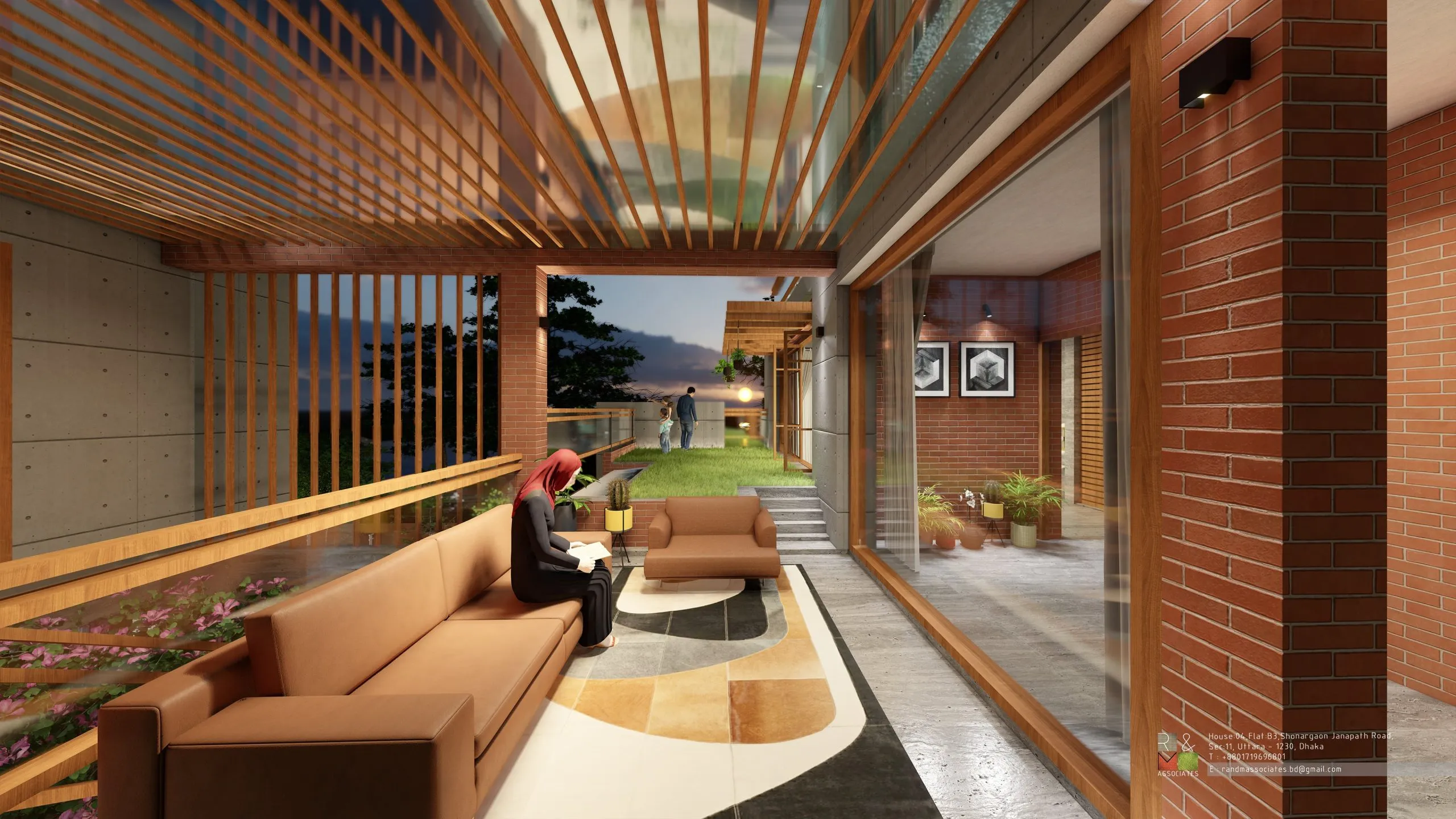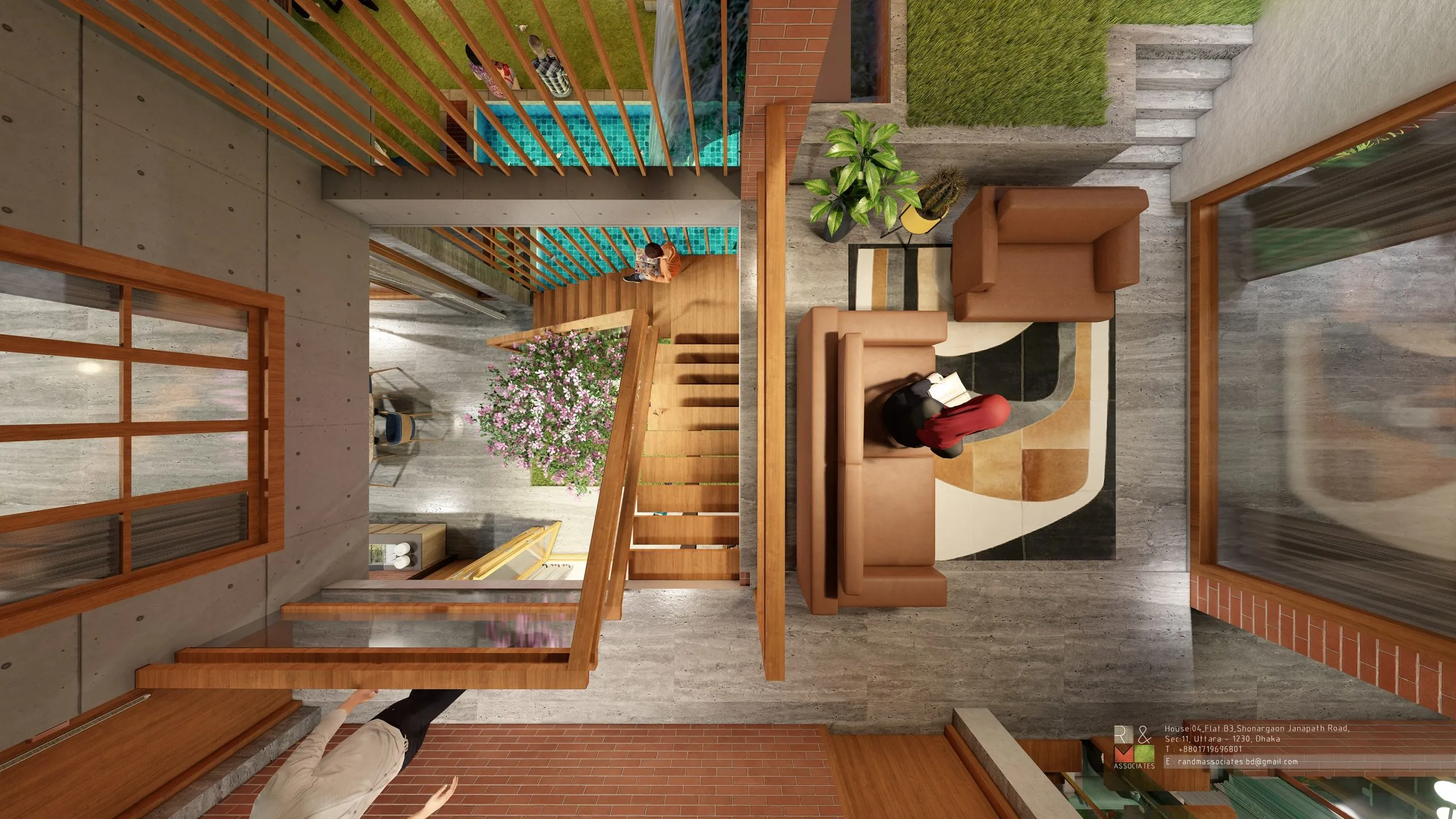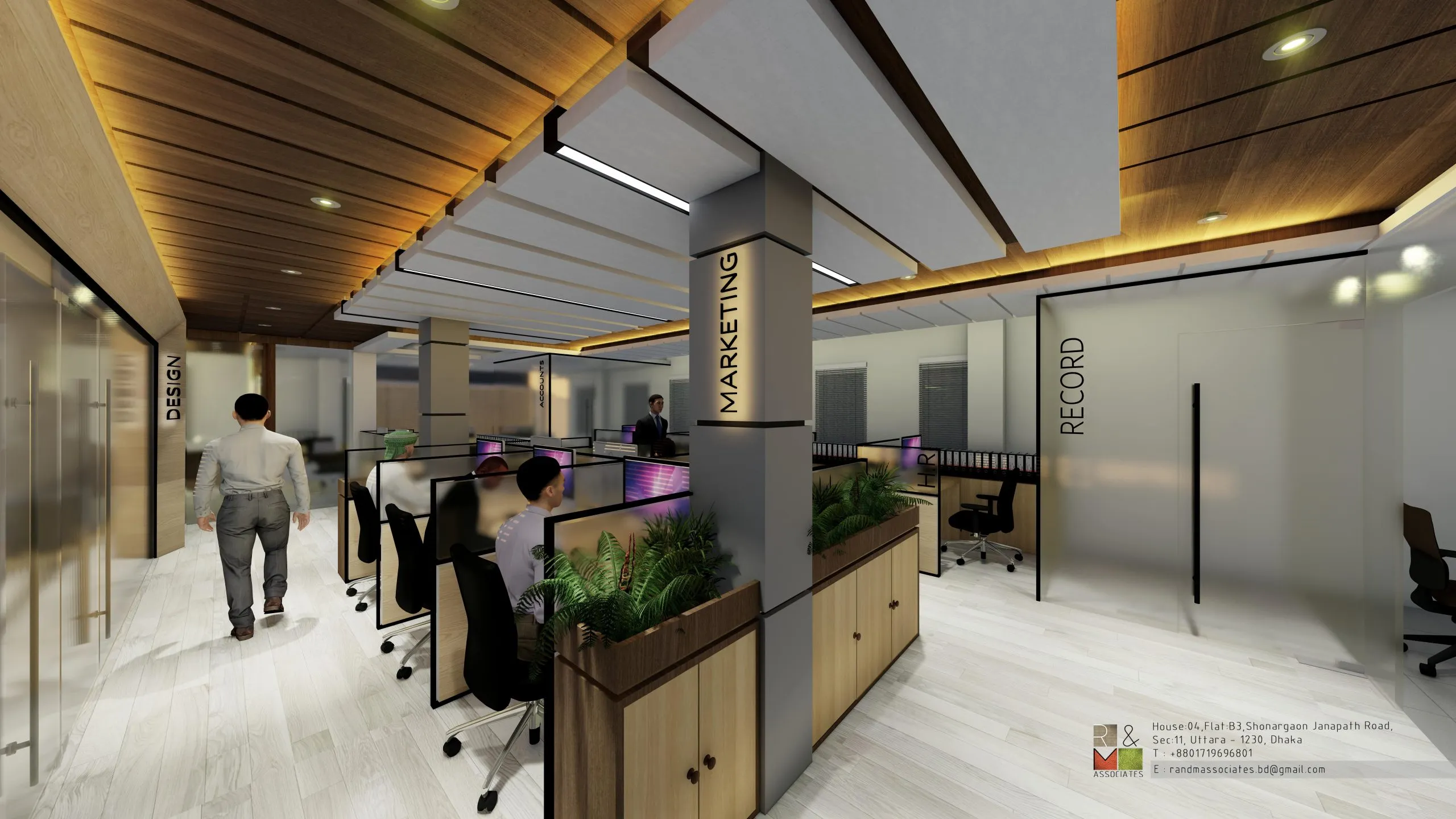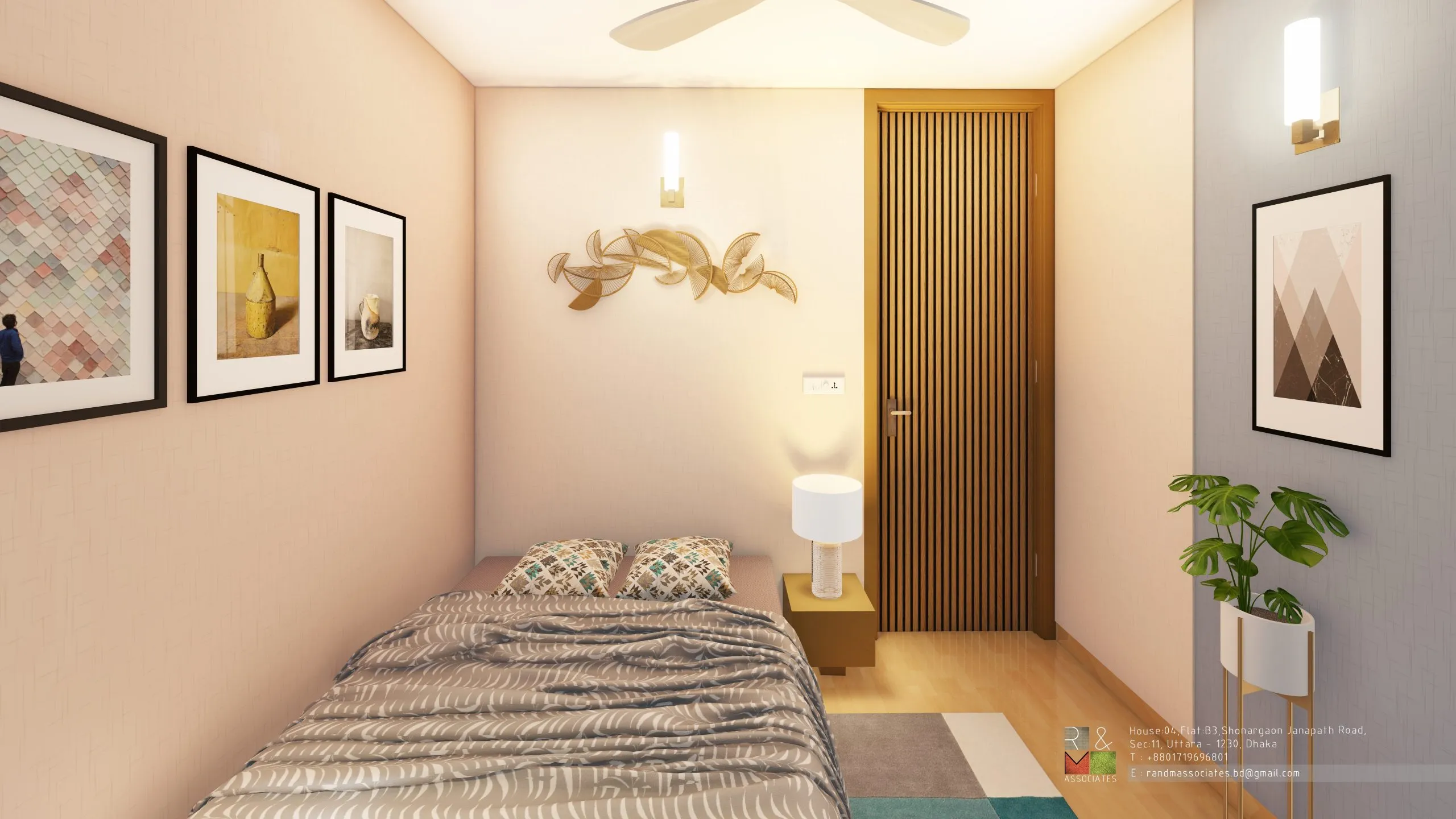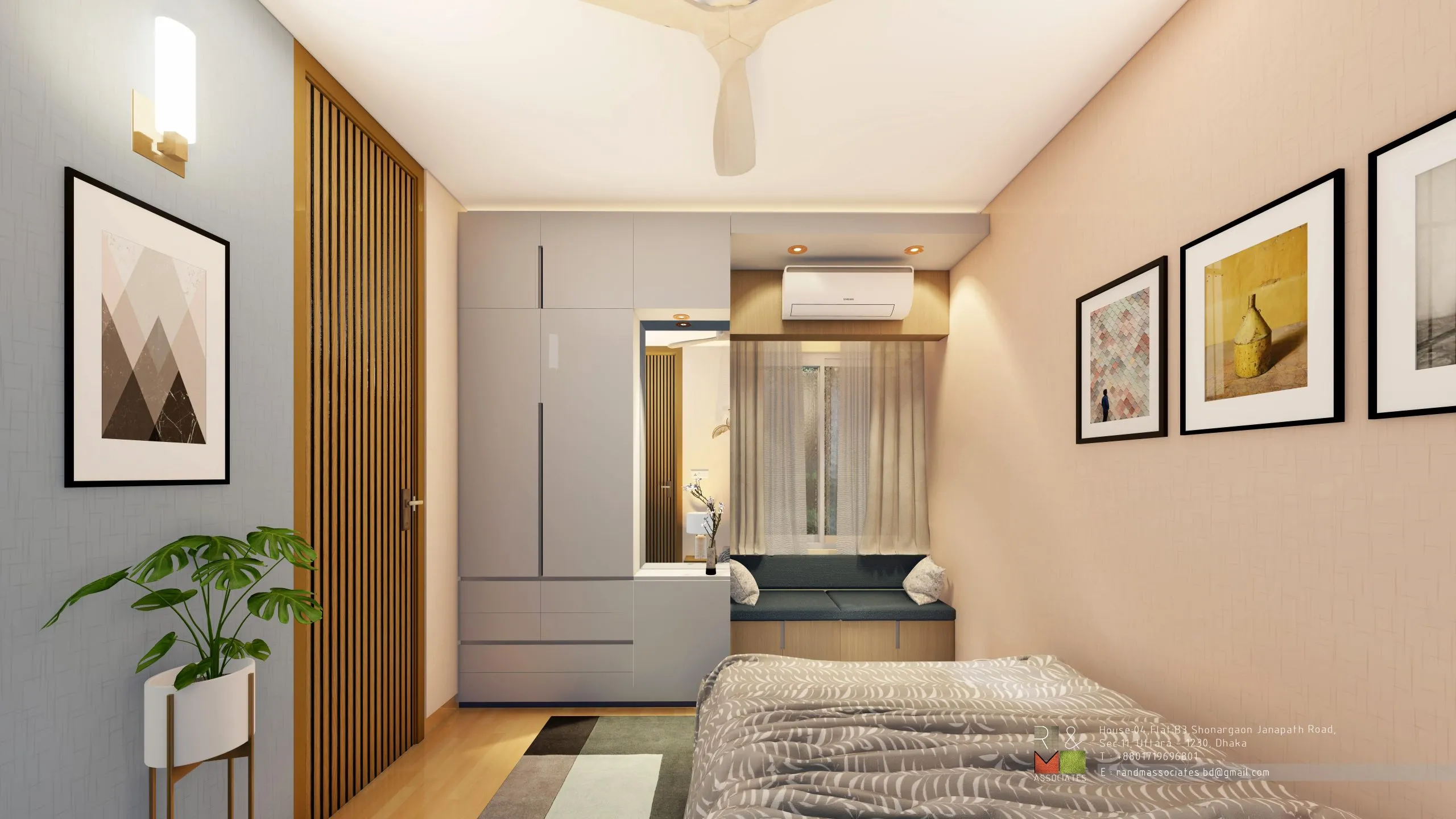Assemblage of Classic and Modern : Mosque at Uttara

An assemblage of Classic and Modern. Proposed 10 Storied Mosque-Madrasa Complex at Uttara, Dhaka
Client : 07 no sector Mosque committee
Location: Sector 07, Uttara, Dhaka
Feel free to visit us anytime convenient or call us for support-
House: 04, Flat: B3, Shonargaon Janapath Road,
Sec:11, Uttara – 1230, Dhaka
T : +8801719696801
E : randmassociates.bd@gmail.com
W: www.randmassociates.com
Y : https://youtu.be/r-ptevaZ1cc
Sustainable Construction

In recent years, there has been a growing movement towards sustainable construction practices, with a focus on reducing the environmental impact of building and construction projects. Sustainable construction involves the use of environmentally friendly materials, energy-efficient technologies, and responsible waste management practices, with the goal of creating structures that are both functional and environmentally responsible.
Methods of Sustainable Construction
- Use of Recycled Materials: One of the most important aspects of sustainable construction is the use of recycled materials. This includes recycled concrete, wood, and steel, which are all materials that can be repurposed and used again in building and construction projects.
- Energy-Efficient Technologies: Another key component of sustainable construction is the use of energy-efficient technologies. This includes the use of solar panels, geothermal systems, and other renewable energy sources, as well as the installation of insulation and high-performance windows to reduce energy loss.
- Water Conservation: Sustainable construction also involves the use of water-conserving technologies, such as low-flow toilets, showers, and faucets, and the use of rainwater harvesting systems to reduce water usage.
- Responsible Waste Management: Sustainable construction also requires responsible waste management practices, including the use of composting toilets, recycling programs, and the reduction of waste through careful planning and design.
- Reduced Environmental Impact: One of the biggest benefits of sustainable construction is the reduced environmental impact it has compared to traditional building and construction methods. This includes a reduction in carbon emissions, water usage, and the waste generated by construction projects.
- Energy Efficiency: Sustainable construction also leads to increased energy efficiency, which can result in lower energy bills and a reduction in the overall cost of operating a building.
- Increased Health and Comfort: Sustainable construction also contributes to improved health and comfort for building occupants, through the use of environmentally friendly materials and energy-efficient technologies.
- Improved Indoor Air Quality: Sustainable construction also results in improved indoor air quality, as buildings that are designed and constructed with sustainable practices in mind tend to have better ventilation, improved insulation, and reduced exposure to harmful chemicals.
- Increased Property Value: Finally, sustainable construction practices can also result in increased property value, as environmentally responsible buildings are becoming more and more desirable in today’s market.
In conclusion, sustainable construction practices offer a number of benefits, including reduced environmental impact, increased energy efficiency, improved health and comfort, and increased property value. By incorporating sustainable construction methods into building and construction projects, we can create structures that are functional, environmentally responsible, and provide long-term benefits for both people and the planet.
Interior Lightting

Introduction:
Lighting is an essential element in any interior design, and it can have a big impact on the look, feel, and functionality of a room. From accent lighting to task lighting and everything in between, choosing the right lighting fixtures and placement can enhance the aesthetic of your home while also improving your daily quality of life. In this article, we’ll explore the different types of interior lighting and offer tips for creating a well-lit home.
Ambient Lighting
Ambient lighting serves as the overall lighting in a room and provides a general level of illumination. This type of lighting can be achieved through overhead fixtures such as ceiling lights, chandeliers, or recessed lighting. In general, you’ll want to aim for ambient lighting that provides enough light to evenly illuminate the entire room.
Task lighting is focused lighting that is designed to help you perform specific tasks, such as reading, cooking, or working at a desk. This type of lighting is usually brighter and more focused than ambient lighting, and it should be placed where you need it most. Examples of task lighting include desk lamps, under-cabinet lights, and pendant lights over a kitchen island.
Accent Lighting
Accent lighting is used to highlight specific areas of a room, such as artwork, bookcases, or architectural features. Accent lighting can be accomplished through the use of wall sconces, track lighting, or picture lights. This type of lighting is meant to draw the eye and add interest to a room, and it’s typically brighter than ambient lighting.
The best way to achieve a well-lit home is to layer different types of lighting. This means using a combination of ambient, task, and accent lighting to create a balanced and harmonious look. For example, you might use ambient lighting to provide overall illumination, task lighting to brighten a workspace, and accent lighting to highlight a piece of artwork.
Lighting Control
In addition to choosing the right type of lighting, it’s also important to consider how you control the lighting in your home. Options include traditional light switches, dimmer switches, smart lighting systems, and timers. Dimmer switches, for example, allow you to adjust the brightness of your lights to suit different moods and activities, while smart lighting systems let you control your lights from a smartphone or tablet.
When selecting lighting fixtures for your home, consider the following tips:
- Consider the style. Select lighting fixtures that complement the style of your home, from contemporary to traditional to rustic.
- In addition to choosing the right type of lighting, it’s also important to consider how you control the lighting in your home. Options include traditional light switches, dimmer switches, smart lighting systems, and timers. Dimmer switches, for example, allow you to adjust the brightness of your lights to suit different moods and activities, while smart lighting systems let you control your lights from a smartphone or tablet.
- Pay attention to energy efficiency. Look for lighting fixtures that are Energy Star certified to help reduce your energy bill and your carbon footprint.
- Think about maintenance. Consider the ease of changing light bulbs and cleaning the fixtures when choosing your lighting.
In conclusion, interior lighting is an essential component of any interior design, and it can have a big impact on the look, feel, and functionality of a room. By choosing the right type of lighting and placement, layering your lighting, and controlling your lights, you can create a well-lit home that enhances the aesthetic of your space while improving your daily quality of life.
Indoor Bonsai

Introduction:
Bonsai is a traditional Japanese art form that involves growing and shaping minia-ture trees in containers. While many people associate bonsai with outdoor garden-ing, indoor bonsai con also be o beautiful and rewarding hobby. With the right care and attention, indoor bonsai trees con thrive and bring a touch of nature into your home.
Choosing the Right Tree
The first step in growing indoor bonsai is to choose the right tree. Not all trees are suitable for indoor growing, so it’s important to choose a species that can survive in low light conditions. Some popular indoor bonsai species include focus, jade. and dwarf pomegranate. When selecting a tree, look for one that is small and young with a well-defined trunk and branches.
Indoor bonsai trees need bright, indirect light to thrive. Place your bonsai near a window that gets plenty of natural light, but avoid direct sunlight, which can scorch the leaves. Most indoor bonsai species prefer temperatures between 60-75°F, but some species can tolerate a wider range of temperatures.
Watering and Humidity
Bonsai trees need regular watering to stay healthy. However, overwatering can be just as harmful as under-watering, so it’s important to find the right balance. To determine when to water your bonsai, stick your finger in the soil. If the top inch of soil is dry, it’s time to water. Most indoor bonsai species prefer a relative humidity of 50-70%, which can be achieved by placing a tray of water near the tree or by misting the leaves regularly.
Like all plants, bonsai trees need nutrients to grow and thrive. Fertilize your bonsai once a month during the growing season (spring and summer) with a balanced, water-soluble fertilizer. During the winter, when the tree is dormant, reduce fertilization to once every two months.
Pruning and Training
Pruning and training are key to shaping your indoor bonsai tree into a beautiful, balanced form. Prune your bonsai regularly to remove dead or yellowing leaves and to control the tree’s growth. Training involves bending and tying the branches to create a desired shape. When training your bonsai, be gentle and patient, as it can take years to achieve the desired form.
Indoor bonsai can be a rewarding hobby that brings a touch of nature into your home. With the right care and attention, indoor bonsai trees can thrive and provide years of beauty and enjoyment. If you’re interested in growing indoor bonsai, start by choosing the right tree, providing proper light, watering, and care, and pruning and training your tree as needed. With a little bit of patience and practice, you’ll soon be growing your own beautiful indoor bonsai trees.
Managing Risks in Construction: Strategies for Identifying and Mitigating Challenges

Introduction:
Risk management is a critical component of construction management. This post explores strategies for identifying and mitigating risks in construction projects.
Body:
Risk Assessment: Techniques for identifying potential risks and their impacts.
Mitigation Strategies: Methods for minimizing and managing risks.
Case Study: A project where effective risk management led to successful results.
Conclusion:
Highlight the significance of proactive risk management and inspire readers to apply these strategies to ensure project success.
Ensuring Quality in Construction: Best Practices for Quality Control

Introduction:
Maintaining high-quality standards is crucial in construction. This post provides best practices for ensuring quality control throughout the construction process.
Body:
Setting Quality Standards: Establishing and communicating quality expectations.
Regular Inspections: The role of inspections in maintaining quality.
Issue Resolution: Strategies for addressing and resolving quality issues.
Conclusion:
Reiterate the importance of quality control in construction and encourage readers to implement these practices to achieve successful outcomes.
Effective Project Planning: Key Strategies for Successful Construction Management

Introduction:
Successful construction management starts with effective project planning. This post outlines key strategies for planning construction projects efficiently.
Body:
Detailed Project Plans: Importance of comprehensive planning and scheduling.
Resource Allocation: Best practices for managing resources and budgets.
Case Study: Example of a well-planned construction project and its outcomes.
Conclusion:
Summarize the benefits of thorough planning in construction management and encourage readers to adopt these strategies for their own projects.
The Role of Technology in Modern Interior Design: Innovations and Trends

Introduction:
Technology is transforming interior design, offering new tools and possibilities. This post explores the latest technological innovations in interior design.
Body:
Smart Home Integration: How smart technology enhances interior functionality.
Virtual Reality in Design: Using VR for design visualization and planning.
Sustainable Technology: Incorporating energy-efficient technologies into interiors.
Conclusion:
Highlight how technology is reshaping interior design and encourage readers to explore these innovations in their own projects.
Personalizing Interiors: How to Infuse Unique Character into Your Space

Introduction:
Personalization is key to making interior spaces feel unique and reflective of their occupants. This post explores how to infuse personal touches into interior design.
Body:
Custom Furniture and Decor: Benefits of bespoke furniture and decor.
Personal Collections: Incorporating personal collections and artwork into design.
Case Study: A project where personalization created a unique and memorable space.
Conclusion:
Encourage readers to embrace personalization in their interior design projects and share ideas for making spaces truly their own.
Elevating Spaces: The Art of Balancing Functionality and Aesthetics

Introduction:
Interior design is a delicate balance between functionality and aesthetics. This post provides tips for creating spaces that are both beautiful and practical.
Body:
Space Planning: Techniques for optimizing space usage and flow.
Color and Lighting: How to use color and lighting to enhance the functionality and mood of a room.
Furniture Selection: Choosing furniture that combines style with practicality.
Conclusion:
Summarize the importance of balancing functionality and aesthetics in interior design and inspire readers to apply these principles to their own spaces.

